- Trauma-Informed High Schools: A Systematic Narrative Review of the Literature
- Review Paper
- Published: 04 March 2021
- Volume 13 , pages 225–234, ( 2021 )

Cite this article
- Carol E. Cohen ORCID: orcid.org/0000-0003-3526-9336 1 &
- Ian G. Barron 1
2912 Accesses
10 Citations
19 Altmetric
Explore all metrics
While a growing number of high school students in the United States have experienced trauma exposure, there is a lack of review of studies that examine the efficacy of trauma-informed high schools. The current systematic review sought to identify reviews of empirical studies that explore the efficacy of trauma-informed approaches in high schools. The Evidence for Policy and Practice (EPPI-Center) framework was used to analyze the quality of literature identified including research design, participants, nature of intervention, method of analysis, and study outcomes. Analysis indicated studies about trauma-informed high schools are in their infancy. Methodological designs were limited, participants were skewed towards adults, and outcomes were specific and not generalized. Indeed, half of the studies focused on teachers alone rather than student outcomes. The small number of existing reviews and studies, and the diversity of study aims and designs, made it difficult to generalize outcome results. Further empirical research is needed on the efficacy of trauma-informed high schools that include more robust research designs as well as students and other stakeholders as participants.
This is a preview of subscription content, log in via an institution to check access.
Access this article
Price includes VAT (Russian Federation)
Instant access to the full article PDF.
Rent this article via DeepDyve
Institutional subscriptions
Similar content being viewed by others
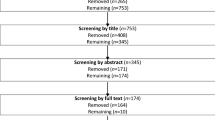
Multi-tiered Approaches to Trauma-Informed Care in Schools: A Systematic Review
Emily Berger

International Trauma-Informed Practice Principles for Schools (ITIPPS): expert consensus of best-practice principles
Karen Martin, Madeleine Dobson, … Emily Berger
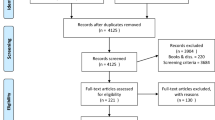
A Scoping Review of School-Based Efforts to Support Students Who Have Experienced Trauma
Brandon Stratford, Elizabeth Cook, … Deborah Temkin
Baroni, B., Day, A., Somers, C., Crosby, S., & Pennefather, M. (2020). Use of the monarch room as an alternative to suspension in addressing school discipline issues among court-involved youth. Urban Education, 55 (1), 153–173. https://doi.org/10.1177/0042085916651321
Article Google Scholar
Barron, I., Mitchell, D., & Yule, W. (2017). Pilot study of a group-based psychosocial trauma recovery program in secure accommodation in Scotland. Journal of Family Violence, 32 (6), 595–606.
Beal, S. J., Wingrove, T., Mara, C. A., Lutz, N., Noll, J. G., & Greiner, M. V. (2019). Childhood adversity and associated psychosocial function in adolescents with complex trauma. Child & Youth Care Forum, 48 (3), 305–322. https://doi.org/10.1007/s10566-018-9479-5
Berliner, L., & Kolko, D. J. (2016). Trauma informed care: A commentary and critique. Child Maltreatment, 21 (2), 168–172. https://doi.org/10.1177/1077559516643785
Article PubMed Google Scholar
Bhattacharya, K. (2017). Fundamentals of qualitative research: A practical guide . Routledge.
Bilias-Lolis, E., Gelber, N. W., Rispoli, K. M., Bray, M. A., & Maykel, C. (2017). On promoting understanding and equity through compassionate educational practice: Toward a new inclusion. Psychology in the Schools, 54 (10), 1229–1237. https://doi.org/10.1002/pits.22077
Blitz, L. V., & Mulcahy, C. A. (2017). From permission to partnership: Participatory research to engage school personnel in systems change. Preventing School Failure, 61 (2), 170–180. https://doi.org/10.1080/1045988X.2016.1242061
Brunzell, T., Stokes, H., & Waters, L. (2016). Trauma-informed positive education: Using positive psychology to strengthen vulnerable students. Contemporary School Psychology, 20 (1), 63–83. https://doi.org/10.1007/s40688-015-0070-x
Buxton, P. S. (2018). Viewing the behavioral responses of ED children from a trauma-informed perspective. Educational Research Quarterly, 41 (4), 30–49. Retrieved from http://silk.library.umass.edu/login?url=https://search.proquest.com/docview/2044334861?accountid=14572
Cole, S., O’Brien, J., Gadd, M., Ristucca, J., Wallace, D., & Gregory, M. (2005). Helping traumatized children learn: Supportive school environments for children traumatized by family violence . Massachusetts Advocates for Children.
Coleman, J. (2019). Helping teenagers in care flourish: What parenting research tells us about foster care. Child & Family Social Work, 24 (3), 354–359. https://doi.org/10.1111/cfs.12605
D’Andrea, W., Sharma, R., Zelechoski, A. D., & Spinazzola, J. (2011). Physical health problems after single trauma exposure: When stress takes root in the body. Journal of the American Psychiatric Nurses Association, 17 (6), 378–392. https://doi.org/10.1177/1078390311425187
Evans, C., & Evans, G. R. (2019). Adverse childhood experiences as a determination of public service motivation. Public Personnel Management, 48 (2), 123–146. https://doi.org/10.1177/0091026018801043
Evidence for Policy and Practice Information and Co-ordinating Centre (EPPI-Centre). (2007). EPPI-Centre methods for conducting systematic reviews . EPPI-Centre, Social Science Research Unit, Institute of Education, University of London.
Franco, D. (2018). Trauma without borders: The necessity for school-based interventions in treating unaccompanied refugees. Child and Adolescent Social Work Journal, 35, 551–565. https://doi.org/10.1007/s10560-018-0552-6
Goodwin-Glick, K. (2017). Impact of trauma-informed care professional development on school personnel perceptions of knowledge, dispositions, and behaviors toward traumatized students (Order No. 10587819). Available From ProQuest Dissertations & Theses Global: Social Sciences. (1886086040). Retrieved from http://silk.library.umass.edu/login?url=https://search-proquest-com.silk.library.umass.edu/docview/1886086040?accountid=14572
Haas, L. (2018). Trauma-informed practice: The impact of professional development on school staff. Available From Social Science Premium Collection. (2101893622; ED585010). Retrieved from http://silk.library.umass.edu/login?url=https://search-proquest-com.silk.library.umass.edu/docview/2101893622?accountid=14572
Hanson, R. F., & Lang, J. (2016). A critical look at trauma-informed care among agencies and systems serving maltreated youth and their families. Child Maltreatment, 21 (2), 95–100. https://doi.org/10.1177/1077559516635274
Howard, J. (2018). A systemic framework for trauma-aware schooling in Queensland . Research report for the Queensland department of Education.
Jayman, M., Ohl, M., Hughes, B., & Fox, P. (2019). Improving socio-emotional health for pupils in early secondary education with pyramid: A school-based, early intervention model. British Journal of Educational Psychology, 89 (1), 111–130. https://doi.org/10.1111/bjep.12225
Kataoka, S. H., Vona, P., Acuña, A., Jaycox, L., Escudero, P.Stein, B. D. (2018). Applying a trauma informed school systems approach: Examples from school community-academic partnerships. Ethnicity and Disease , 28 (Supplement 2). Retrieved from http://apps.webofknowledge.com.silk.library.umass.edu/full_record.do?product=WOS&search_mode=GeneralSearch&qid=2&SID=5C4XK4ddOSAN4QlStWz&page=1&doc=2
Labaree, D. F. (1997). Public goods: The American struggle over educational goals. American Educational Research Journal, 34 (1), 39–81.
Lemkin, A., Walls, M., Kistin, C. J., & Bair-Merritt, M. (2019). Educators’ perspectives of collaboration with pediatricians to support low-income children. Journal of School Health, 89 (4), 300–307. https://doi.org/10.1111/josh.12737
Low, S., Smolkowski, K., Cook, C., & Desfosses, D. (2019). Two-year impact of a universal social-emotional learning curriculum: Group differences from developmentally sensitive trends over time. Developmental Psychology, 55 (2), 415–433. https://doi.org/10.1037/dev0000621
Maynard, B. R., Farina, A., Dell, N. A., & Kelly, M. S. (2019). Effects of trauma-informed approaches in schools: A systematic review. Campbell Systematic Reviews, 15, 1–2. https://doi.org/10.1002/cl2.1018
McDonnell, L. M. (2015). Stability and change in title I testing policy. RSF The Russell Sage Foundation Journal of the Social Sciences, 1 (3), 170–186. https://doi.org/10.7758/rsf.2015.1.3.09
Morinaj, J., & Hascher, T. (2019). School alienation and student well-being: A cross-lagged longitudinal analysis. European Journal of Psychology of Education, 34 (2), 273–294. https://doi.org/10.1007/s10212-018-0381-1
Muratori, P., Lochman, J. E., Bertacchi, I., Giuli, C., Guarguagli, E., Pisano, S., & Mammarella, I. C. (2019). Universal coping power for pre-schoolers: Effects on children’s behavioral difficulties and pre-academic skills. School Psychology International, 40 (2), 128–144. https://doi.org/10.1177/0143034318814587
National Child Traumatic Stress Network (n.d.). Creating Trauma Informed Systems. Retrieved from https://www.nctsn.org/trauma-informed-care/creating-trauma-informed-systems
National Child Traumatic Stress Network (2013). Understanding child trauma. Retrieved from https://www.nctsn.org/resources/understanding-child-trauma-and-nctsn
Overstreet, S., & Chafouleas, S. M. (2016). Trauma-informed schools: Introduction to the special issue. School Mental Health, 8, 1–6. https://doi.org/10.1007/s12310-016-9184-1
Perfect, M., Turley, M., Carlson, J., Yohannan, J., & Gilles, M. (2016). School-related outcomes of traumatic event exposure and traumatic stress symptoms in students: A systematic review of research from 1990–2015. Disabilities and Psychoeducation Studies, 27 (8), 7–43. https://doi.org/10.1007/s12310-016-9175-2
Romeo, R. D. (2013). The teenage brain: The stress response and the adolescent brain. Current Directions in Psychological Science, 22 (2), 140–145.
Rossman, G. B., & Rallis, S. F. (2012). Learning in the field: An introduction to qualitative research (3rd ed.). Sage.
Taytslin, A. J. (2016). Teacher experiences in response to training on safe and supportive schools (Order No. 10192502). Available from ProQuest Dissertations & Theses Global; Social Science Premium Collection. (1848669014). Retrieved from http://silk.library.umass.edu/login?url=https://search-proquest-com.silk.library.umass.edu/docview/1848669014?accountid=14572
Tishelman, A. C., Haney, P., O’Brien, J. G., & Blaustein, M. E. (2010). A framework for school-based psychological evaluations: Utilizing a “trauma lens.” Journal of Child and Adolescent Trauma, 3 (4), 279–302. https://doi.org/10.1080/19361521.2010.523062
van der Kolk, B. A. (2005). Developmental trauma disorder: toward a rational diagnosis for children with complex trauma histories. Psychiatric Annals, 35 (5), 401–408.
Venta, A., Bailey, C., Muñoz, C., Godinez, E., Colin, Y., Arreola, A., & Lawlace, S. (2019). Contribution of schools to mental health and resilience in recently immigrated youth. School Psychology, 34 (2), 138–147. https://doi.org/10.1037/spq0000271
Waibel, L. (2017). Applications of trauma-informed curriculum in the artroom to promote adolescent identity development . Available From ERIC. (1968431573; ED574853). Retrieved from http://silk.library.umass.edu/login?url=https://search-proquest-com.silk.library.umass.edu/docview/1968431573?accountid=14572
Wamser-Nanney, R., & Vandenberg, B. R. (2013). Empirical support for the definition of a complex trauma event in children and adolescents. Journal of Traumatic Stress, 26 (6), 671–678. https://doi.org/10.1002/jts.21857
Download references
Author information
Authors and affiliations.
College of Education, University of Massachusetts Amherst, Amherst, USA
Carol E. Cohen & Ian G. Barron
You can also search for this author in PubMed Google Scholar
Contributions
Carol Cohen performed the literature search and drafted the initial analysis. Ian Barron critically revised the manuscript.
Corresponding author
Correspondence to Carol E. Cohen .
Ethics declarations
Conflict of interest.
The authors declares that they have no conflict of interest.
Additional information
Publisher's note.
Springer Nature remains neutral with regard to jurisdictional claims in published maps and institutional affiliations.
Rights and permissions
Reprints and permissions
About this article
Cohen, C.E., Barron, I.G. Trauma-Informed High Schools: A Systematic Narrative Review of the Literature. School Mental Health 13 , 225–234 (2021). https://doi.org/10.1007/s12310-021-09432-y
Download citation
Accepted : 17 February 2021
Published : 04 March 2021
Issue Date : June 2021
DOI : https://doi.org/10.1007/s12310-021-09432-y
Share this article
Anyone you share the following link with will be able to read this content:
Sorry, a shareable link is not currently available for this article.
Provided by the Springer Nature SharedIt content-sharing initiative
- Traumatization
- Adolescents
- Trauma-informed
- High schools
- Find a journal
- Publish with us
- Track your research
- Reference Manager
- Simple TEXT file
People also looked at
Original research article, leading trauma-informed education practice as an instructional model for teaching and learning.

- Melbourne Graduate School of Education, University of Melbourne, Parkville, VIC, Australia
Advances in trauma-informed practices have helped both researchers and educators understand how childhood trauma impacts the developmental capacities required for successful learning within school. However, more investigation is required to understand how leaders can implement trauma-informed practices in targeted areas of their schools. This paper is a case study of one school who intentionally implemented a trauma-informed instructional practice approach after undertaking trauma informed positive education professional learning over a period of two and a half years. The research was guided by three questions: how are students supported in their learning and wellbeing; how can teachers be supported to develop consistent trauma-informed practice in their classrooms; and what is the role of leadership in this process? To research the approach, quantitative measures of staff and student perceptions and qualitative strategies centering the voices and experiences of students, teachers, and school leaders, were employed. Implications for school leaders suggest that when implemented as a whole-school approach through multiple and simultaneous mechanisms, trauma-informed positive education instructional practices have the possibilities of yielding enhanced outcomes for wellbeing and enable students to be ready to learn.
Introduction
Trauma-informed practices for teaching and learning require further exploration to better understand the ways in which school leaders can effectively implement and sustain trauma-informed practice as a whole-school approach to enhance both wellbeing and learning. Building upon the longstanding evidence of lineages such as social emotional learning (SEL; see for example Durlak et al., 2011 ) and the growing evidence base for trauma-informed educational practices ( Berger, 2019 ), these advances have been shown to have positive impacts on social and emotional student capabilities. The aim is to expand the field to consider how trauma-informed practices can enhance instructional outcomes. Relevant literatures contributing to a school’s trauma-informed instructional approach are drawn together, including: trauma-informed education practices; positive education; leading instruction; and professional learning.
The research (funded by Berry Street and the Brotherhood of St Laurence) is drawn from a secondary school that was experiencing difficulty with their delivery of learning and wellbeing outcomes for students (evidenced by their standardized testing and teacher judgment results as well as student responses to the Attitudes to School Survey (AtoSS). Their journey was followed to implement a trauma informed instructional approach. This is the first two and a half years of that journey where the focus has been on student wellbeing and assisting students to be ready to learn. The contention is that through the intentional application of whole school strategies by school leadership, trauma-informed instructional models de silo traditional SEL approaches. Doing this enables the incorporation of knowledge of trauma’s negative impacts on child development and to enact proactive strategies to enhance student engagement with learning. This knowledge is then deliberately applied to multiple aspects of school’s instructional model. In short, trauma-informed instructional practices can help students and their teachers get ready to learn .
Trauma-Informed Education Practice
Trauma-informed education helps teachers understand the impacts of trauma and suggests proactive strategies to position the school itself as a predictable milieu for healing and growth. Broadly speaking, trauma is an adverse experience that compromises an individual’s sense of being safe in relationships and in the world around them; and can significantly inhibit both self-regulatory and relational capacities required for successful learning ( Brunzell et al., 2015 ). After a traumatic event or a series of events, it is normal for children to experience fear, stress and a heightened state of alertness ( Shonkoff et al., 2012 ). With simple trauma, these experiences tend to be brief, often occurring only once. However, complex relational trauma occurs over time and can be repeated often by someone known to the child. When children experience complex trauma, the effects are profound, multiple and not always well understood ( Van der Kolk, 2005 ; Bath, 2008 ). Throughout the pandemic incidences of complex trauma have increased with ongoing financial insecurity, lack of social connectedness and a rise in family violence ( Wilkins et al., 2021 ). This has manifested in young people’s mental health with record levels of mental health issues being recorded for both children and young people ( Brennan et al., 2021 ).
Complex trauma can present as a risk to children’s cognitive functioning in ways that are apparent from late infancy ( Cook et al., 2005 ). These effects include delays in developing receptive and expressive language, problem solving skills, attention span, memory and abstract reasoning ( Cook et al., 2005 ; Shonkoff et al., 2012 ). As would be expected, cognitive deficits such as these adversely affect children’s academic outcomes. Studies demonstrate that individuals who report adverse childhood experiences are 2.5 times more likely to experience difficulties at school ( Anda et al., 2006 ). Such difficulties are multiple and include low achievement, participation in special support programs, early drop out, suspension and expulsion ( Cook et al., 2005 ; Anda et al., 2006 ; Porche et al., 2016 ).
These neurological impacts of trauma have important implications for children’s relationships with teachers and other adults in school settings. In childhoods characterized by supportive, attentive parents, adults can act as a mediator, helping children to respond to dangers and the effects of trauma ( Van der Kolk, 2005 ). However, when a child presumes adults to be a threat and has difficulty forming attachments, it creates significant barriers for teachers and other professionals to assume a supportive role. The combination of these effects makes it more difficult for children impacted by trauma to independently form healthy relationships with peers and moderate their emotions in the classroom ( West et al., 2014 ).
Aside from home, school is the place where the majority of children spend most time, highlighting the importance of making it a safe space ( Downey, 2012 ; Costa, 2017 ). Feeling connected and having a sense of belonging to school are important protective factors for children ( Resnick et al., 1997 ). It cannot be assumed, however, that schools will provide a sense of safety for children contending with trauma’s impacts.
Due to the challenging behaviors that children sometimes present, schools and teachers may adopt a punitive approach in regard to their interactions with these children ( Hemphill et al., 2014 ; Howard, 2019 ) that ignore a child’s complex history ( Costa, 2017 ).
In order to support children to meet their needs for safety at school, teachers should be supportive, caring, and avoid acting in ways that might trigger the child and produce power-laden behavioral responses like bullying ( Bath, 2008 ; Shonkoff et al., 2012 ; Carello and Butler, 2015 ). To successfully support children, teachers require training about trauma and exposure to risk and how it is expressed by children ( Day et al., 2015 ; Berger, 2019 ; Stokes and Brunzell, 2019 ). This has implications for whole-school implementation, making it vital that teachers be supported through professional learning to understand how to identify risk and how to respond in proactive ways.
A Trauma-Informed Positive Education Approach to Teaching
From the paradigm of positive psychology and allied wellbeing sciences, positive education is the application of positive psychology interventions appropriate for use by a teacher in the classroom and is primarily concerned with improving an individual’s sense of social and emotional wellbeing. It aims to contribute to their hopefulness, optimism for the future and wellbeing ( Line Seligman and Csikszentmihalyi, 2000 ). Dodge et al. (2012) describe wellbeing as a fluid phenomenon that can be subject to change as children experience challenges and setbacks that unsettle their perceptions that all is okay with their world. In order to maintain a sense of equilibrium in their wellbeing, it is necessary for children to draw upon social and emotional capacities. This becomes more difficult for children who have experienced trauma ( Mashford-Scott et al., 2012 ).
Positive education, that includes a focus on strategies to increase student wellbeing, then ensures that educators remember that strengths reside in every one of their students ( Seligman et al., 2009 ). Put briefly, strength-based approaches aim to capitalize and build on children’s existing psychological strengths and positive dispositions ( Alvord and Grados, 2005 ).
Trauma informed positive education (TIPE) is one such approach using positive education strategies that was developed to meet dual concerns within the classroom for healing and growth ( Brunzell, 2017 , 2021 ). The development of the TIPE model was based upon a systematic literature review of trauma-aware practice models (see de Arellano et al., 2008 ; Perry, 2009 ; Wolpow et al., 2009 ) and of the student wellbeing literature (see Peterson and Seligman, 2004 ; Cornelius-White, 2007 ; Waters, 2011 ).
The TIPE model is based on developmental strategies focused on three trauma-informed positive education aims: (1) to build the self-regulatory capacities of the body and emotions, (2) to support students to build their relational capacity and experience a sense of relatedness and belonging at school, and (3) to integrate wellbeing principles that nurture growth, identify strengths and build students psychological resources ( Brunzell and Norrish, 2021 , p. 66). TIPE was developed as a pedagogical practice model for teachers to assist teachers in supporting trauma-affected students. The three developmental aims were developed to strengthen teacher practice through an understanding of the underlying causes of student resistance and other concerning classroom behaviors ( Brunzell et al., 2015 ) (see section “Materials and Methods” for an explanation of the TIPE professional learning model that has been delivered in schools). In an evaluation of the TIPE model when implemented in schools ( Stokes and Turnbull, 2016 ), it was found to have most impact on student learning and wellbeing when incorporated into everyday classroom routines rather than being confined to the delivery of pastoral care and home group sessions.
Leading Instructional Practices and the Role of Professional Learning
There has been ongoing interest in what educational leaders do to successfully lead their schools, both in learning and wellbeing as interconnected priorities. Whilst the impact of school leadership on student learning has been noted as difficult to measure ( Robinson and Gray, 2019 ), there is general acceptance by educators that leadership is important to student outcomes ( Leithwood et al., 2019 ). As noted by Dinham (2008) school leaders create the conditions for teachers to teach effectively and learning to take place. Equally, the impact of leadership on student wellbeing has also been difficult to measure, but the connection between learning and wellbeing is clear with the quality and design of student learning environments impacting on student wellbeing, engagement and retention ( Catalano et al., 2004 ; Bond et al., 2007 ). Many researchers have sought to propose a relationship between student attitudes, student wellbeing and academic achievement (see for example Seligman et al., 2009 ). This is aligned with the current Framework for Improving Student Outcomes (FISO 2; Victorian State Government Department of Education and Training [VIC DET], 2022b ) that places both learning and wellbeing at the center of school improvement.
Robinson et al. (2008) conducted meta-analysis research on the impact of leadership on student outcomes (as a measure of success). They note that an instructional leader focuses on specific pedagogical work of teachers in the classroom. This enables the principal to have influence over what is happening with learning and wellbeing in the classroom while not actually being in the classroom ( Wahlstrom and Seashore-Louis, 2008 ). To be an instructional leader there are some key practices to enact. While these practices have been developed from a range of research in all schools, they are equally relevant for leaders in trauma affected schools. These practices include creating an orderly and supportive environment in the classroom ( Robinson et al., 2008 ); ensuring the quality of teaching through implementing a coherent instructional framework and the monitoring of student outcomes using evidence. Another important practice is to resource strategically and to understand both teacher and student time as a finite resource ( Robinson et al., 2008 ) with the enabling of on-task learning is a valuable way to effectively use this resource.
Another key leadership practice identified by Robinson and Gray (2019) to influence student outcomes is the leadership of teacher learning and development. Robinson and Gray (2019) relate this leadership practice to the learning needs of students. Trauma informed professional learning extends this leadership practice to both the learning and wellbeing needs of students ( Berger, 2019 ; Stokes and Brunzell, 2019 ). Stokes and Turnbull (2016) comment that professional learning in trauma-informed practice assists leaders and teachers to acknowledge the need for alternative instructional approaches to address the needs of students from trauma affected backgrounds. This responds to an issue faced in trauma affected schools, that of teachers experiencing professional burn out when unable to successfully teach vulnerable students ( Sullivan et al., 2014 ).
To ensure that both leaders and teachers engage in professional learning that can change their practice, professional learning must include more than just delivery of content. Underpinning the leadership of teacher learning and development are characteristics that Thompson et al. (2020) contend will lead to effective professional learning. These include: the building of trust; subject matter that is relevant; a sustained duration of programs; opportunities for teacher reflection and personalized support to individual learning needs.
Materials and Methods
This study draws on a larger 4-year longitudinal study of the implementation of trauma-informed education in three schools in Victoria, Australia, that is still being undertaken. The research is guided by three questions: how are students supported in their learning and wellbeing; how can teachers be supported to develop consistent trauma-informed practice in their classrooms; and what is the role of leadership in this process? All three schools received professional learning in the TIPE model (see the process outlined at the end of this section).
One school was selected and studied in depth because of the particular work they had done to intentionally implement a trauma-informed instructional approach based on their school context. A case study approach is used as the design for this study to focus upon depth rather than breadth ( Denscombe, 2003 ). As previously noted by their leaders, the school had longstanding difficulty delivering successful learning and wellbeing outcomes for their students. Therefore, the change in practice could be clearly followed once the initial professional learning had been delivered then sustained at the school. In addition to this, the school was able to share school data from the first 3 years (2019–2021) that enabled quantitative and qualitative perspectives to be gathered on the changes that had occurred over time.
Permission to conduct the research was granted through the University of Melbourne’s Human Ethics Advisory Committee (HEAC no. 1955892.1) and the State Government of Victoria’s Department of Education (DET). Because of COVID related lockdowns and remote learning in 2020 and 2021, all research in schools was suspended for periods of time. An exemption to the suspension was granted by DET for data collection in this study at different periods throughout 2020 and 2021, but this limited the original planned data collection (two sets of interviews were planned for each year) over 2020 and 2021.
It is a descriptive case study describing an intervention and the real-life context in which it has occurred ( Stake, 1995 ). The investigation of the implementation of trauma-informed instructional practices was from 2019 to 2021, using multiple sources of data from one secondary school and so binding the case by time and activity ( Baxter and Jack, 2008 ). As Baxter and Jack (2008) note, case study research can integrate both qualitative (interviews) and quantitative (surveys) data to enhance the understanding of what is being studied. Of importance is the convergence of these sources in the analysis ( Baxter and Jack, 2008 ) to add strength and credibility to the findings. The description of the implementation of trauma informed instructional practices, while a case of one school, provides findings that may be relevant to other school and educational settings ( Stake, 1995 ).
Student and Family Context
The school participating in this study is situated in a suburb approximately 50 km from the state’s metro center. It is a suburb that has high levels of financial disadvantage and low levels of educational achievement. In 2016, the unemployment level in the region was 13.2% compared the Victorian average of 6.6% and national average of 6.9% ( Australian Bureau of Statistics, 2020 ). The area ranks in the five most disadvantaged postcodes within the state out of 667 state postcodes ( Vinson et al., 2015 ). Of students in this school, 68% were rated as being in the lowest 25% of the Index of Community Socio-Educational Advantage (ICSEA), a measure of socio-economic status highlighting the socio-economic disadvantage experienced by many of their students ( Australian Curriculum Assessment and Reporting Authority [ACARA], 2020 ). Approximately 75% of students have or have had Department of Human Services (DHS) involvement within their family.
Staffing Composition
Of the 34 teachers in the school, 56% are graduate and early career teachers with 14.5% less of this group with than 5 years of experience, 22% are graduates and 19.5% are pre graduates including Teach for Australia and those with permission to teach. Twelve percent of teachers have between 5 and 10 years of experience and 32% have greater than 10 years of experience.
Research Tools and Analytical Strategies
Both quantitative and qualitative data was gathered from the school. Because of Department of Education research restrictions in schools, related to COVID-19, interview data was only collected in 2021. Overall, 32 interviews were conducted (leadership N = 4, teachers N = 6, educational support staff N = 2, students N = 20; years 7–12). The principal provided the research team with 3 years of VIC DET surveys from 2019 to 2021. These surveys were:
The School Staff Survey (SSS) ( Victorian State Government Department of Education and Training, 2021 ) 1 . This was completed by the majority of staff (2019: N = 35, 2020: N = 30, 2021: N = 34).
The AtoSS Victorian State Government Department of Education and Training [VIC DET] (2022a) 2 . This was completed by the students [2019: N = 192 (59%), 2020: N = 256 (81%), 2021: N = 260 (83%)].
Relevant areas have been drawn on from both surveys that relate to the research study.
Data Analysis
The framework from Miles and Huberman (1994) was used to analyze the data from the interviews with leaders, teachers, educational support staff, and students. This framework follows a four-step process: data reduction, data display, identifying themes, and verifying conclusions. In the data reduction stage, the interviews were coded from each group of participants using the research questions as an initial guide (see Table 1 for an example of the overall research questions, the sub questions for teachers and the initial coding of responses). The data display stage with the themes from all four groups was displayed to look for patterns and interrelationships. This allowed for higher order themes (such as the development of the trauma informed instructional model ) to emerge as the data from all four groups, contributed to the analysis. Finally, using step four of Miles and Huberman (1994) framework, verifying conclusions, the confirmability of the data was analyzed with reference to the literature ( Miles and Huberman, 1994 , p. 11).
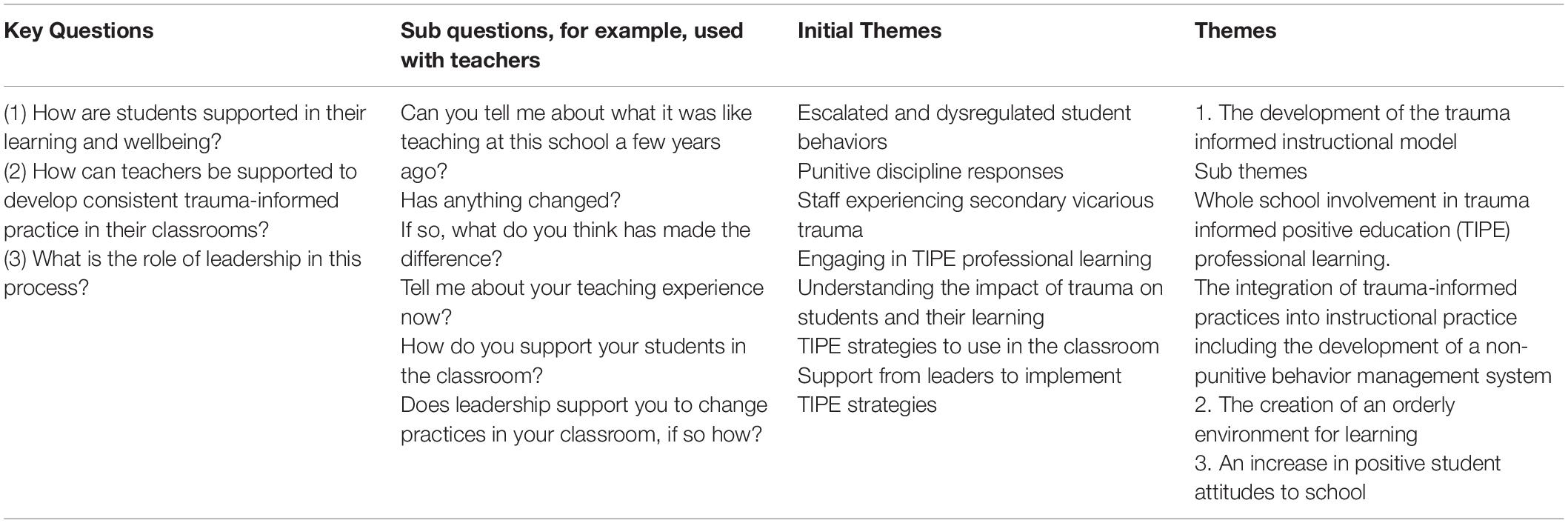
Table 1. Summary of key questions and themes.
From this process, three overarching themes and two sub themes emerged. See table below. These themes are used to structure the following sections where the data is presented and discussed.
The Trauma Informed Positive Education Professional Learning Model
The school undertook professional development in trauma-informed positive education ( Brunzell et al., 2015 ) from mid 2019 to 2021. This included four whole days of training for all staff including leadership and then further master classes (conducted face to face when possible and online) in 2021 as well. Also integrated within the third year (2021) was a coaching program for individual teachers with support from senior leaders.
Each of the four training days on the five domains of TIPE and subsequent staff implementation and reflection on the implementation were all facilitated and supported by the TIPE trainer.
The 4 days of training (underpinned by the three TIPE aims as outlined in the literature) focused on the domains of:
• Body, a suite of mindsets, strategies and interventions that help students to develop their self-regulatory capacities (Day 1);
• Relationship, supporting teachers to form strong and nurturing relationships to assist students to heal, grow and learn (Day 2);
• Stamina, supporting students to sustain effort in the classroom, and to demonstrate perseverance and resilience in learning (Day 3);
• Engagement, pathways to cultivate student interest, curiosity, flow and positive emotions in the classroom (Day 3); and
• Character, building psychological strengths through crafting conversations with children about what they value and do well (Day 4) ( Brunzell and Norrish, 2021 , pp. 67–71).
The 4 days followed an Appreciative Inquiry Participatory Action Research Cycle (AIPARC) ( Ludema and Fry, 2008 ; see Figure 1 ).
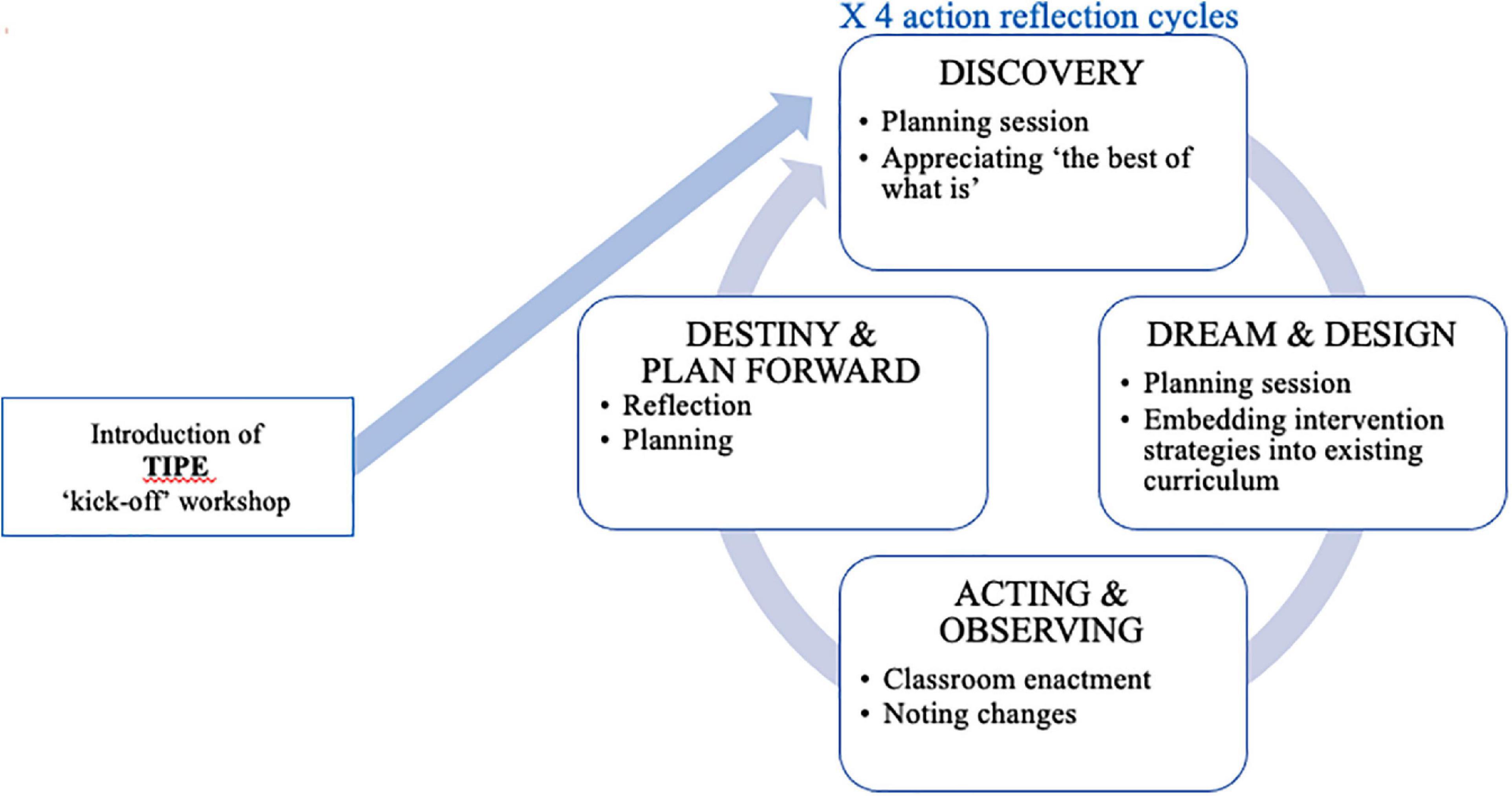
Figure 1. TIPE appreciative inquiry participatory action research cycle (adapted from Brunzell, 2019 , p. 33).
Initially staff were guided through the Discovery phase as they developed a trauma-informed positive education lens through which to understand their students’ behaviors and needs.
In the Dream and Design phase staff generated and revised a question of their own to ensure that their future actions within leadership and in the classroom were meeting the current needs of their students. This involved reframing a deficit based question (i.e., How do I fix the aggressive behaviors in my classroom? ) to an “unconditional positive question” (i.e., What strategies can I use to increase a culture of relational density in my classroom?) . Using an “unconditional positive question” opens up new alternatives for transformation ( Ludema et al., 2006 , p. 155). Teachers at this school most commonly questioned: How can I support my classroom to stay on task? How can I get [student] to ignore distractions and complete his work?
As part of the Design phase , leaders, teachers and educational support staff co-created strategies (four different training days for the five domains) to enact in the classroom. These included: Domain 1 Body: providing effective alternatives to exclusion when students needed to self-regulate when escalated; Domain 2 Relationships: de-escalating students through proactive relational connection; Domain 3 Stamina: taking a strengths-based approach to restorative conversations to facilitate the student back to on-task, in-classroom learning; Domain 4 Engagement: Ways to cultivate student interest, curiosity, flow and positive emotions in the classroom; and Domain 5 Character: Building psychological strengths through crafting conversations with children about what they value and do well.
The Acting and observing phase involved the further refinement of whole school strategies by leadership in consultation with teachers. Teachers then implemented the strategies in the classroom with support from the leadership team.
On the next training day, the staff undertook reflection and future planning at the beginning of the training day in the Destiny and Plan Forward phase of the AIPAR cycle prior to moving to the next domain.
Findings and Discussion
As a unified effort, the school featured in this case study implemented trauma-informed education with it strategically positioned within its instructional practice. As Overstreet and Chafouleas (2016) note aligning trauma informed practices with ongoing educational practices can assist in the implementation of these practices into the school. This includes the incorporation of the knowledge of trauma’s negative impacts on child development and learning along with proactive trauma-informed strategies to be deliberately applied to multiple aspects of a school’s instructional model.
The research was undertaken at a school which had high levels of teacher absenteeism/turnover and low moral as well as low student outcomes (both academic and wellbeing). Leadership in the school acknowledged that teachers required a significant shift to their instructional practice and a wholesale change in the way they worked together to improve student outcomes. At the stage of this research, the school, while having undertaken all the TIPE professional learning, was working consistently within the first three domains of Body , Relationship , and Stamina . This is reflected in the responses from leaders, teachers and students. The following section provides evidence for the school moving from being trauma-affected to trauma-informed; and outlines the instructional elements that were implemented at the school along with discussion of the preliminary outcomes from those elements including the creation of an orderly learning environment and positive student outcomes.
Development of a Trauma Informed Instructional Model
From 2019–2021, the school leadership has taken steps to develop a trauma informed instructional model. This involved two key elements:
• Whole school involvement in TIPE professional learning (see in “Materials and Methods” for the outline of this process)
• The integration of trauma-informed practices into instructional practice including the development of a non-punitive behavior management system
Whole School Involvement in Trauma Informed Positive Education Professional Learning
The whole school involvement in TIPE professional learning over a sustained period of time enabled the leadership and teachers to work together on issues that were facing the school. Robinson (2011) describes effective teacher learning as one that includes all staff who have responsibility for instruction in the school to facilitate a shared responsibility for creating an effective climate for learning. This includes the participation of school leaders in the professional learning which as a leadership practice, has one of the biggest impacts on improving student outcomes ( Robinson et al., 2008 ).
Initially teachers spoke about their understandings of students impacted by trauma. One of the teachers describes the lives of some of the students that she taught.
I think everything is a struggle. Then when you throw in home life and those past traumas, or current traumas, in with being behind in the education, it just explodes into its own little world of understanding why these students react the way they do at times.
A school leader described the difficulty for new teachers or teachers who had not had experience working with children who are impacted by trauma:
They can’t really see the, the bottom of the iceberg. They’re only seeing what they see at the surface level stuff, they don’t really see what’s actually going on.
The school’s youth worker described what it was like before teachers understood the impact of trauma:
I don’t think staff were as equipped to do certain things, both teachers and wellbeing. I just think their training in certain areas, for understanding trauma-informed stuff, their empathy for certain things just wasn’t as good, and it just gave more of this kind of, it was much more of a hectic, uncontrolled - like a hectic energy.
Robinson (2011) comments that having leadership involved in professional learning allows the leaders to understand the challenges the teachers are facing in their context. This understanding was witnessed when one leader commented on the importance of teachers understanding the impact of trauma and how the training assisted with this:
Understanding the background of trauma and how that can manifest itself in so many different ways for a child. The willingness of staff to work through this and not just go, that’s a naughty kid.
The school staff then went on to describe the TIPE professional learning. One teacher described the 4 days of training which sustained their professional engagement with this instructional approach from mid 2019 – mid 2021 (at time of data collection) and how they transferred this learning to the classroom. As Wiliam (2014) notes teachers must be supported to develop their practice which in this case is trauma informed practice.
Yeah, 4 days spread out and so we’ve had time to - we unpack one domain, talk about I guess the reasons behind it, what it looks like in a classroom, all that sort of thing. Then we have time to implement that before we go into day two.
Another teacher described the training in more detail:
My initial training was coming in and doing it as a whole school training, so where we met as a staff, we spent a whole day learning about what are the areas and practicing. So, we would practice strategies you could use in the classroom, so we’d go through a role play.
To have an impact professional learning must be sustained ( Knapp, 2003 ; Thompson et al., 2020 ). The implementation of all the strategies was an ongoing process of learning and trialing for teachers. One teacher commented that this would take some time to put in place:
I think it is a lot to learn straight away and because we’ve only really had the couple of sessions on teaching it to the staff and - it’s been a lot to take in. I think it will probably take us another little while to get everyone’s heads around it and everyone doing it consistently in the classes and everyone using brain breaks and things like that.
School leadership then developed processes to assist staff (in between the training days) to effectively implement the TIPE model of instructional practice in their classrooms. They developed a coaching process that incorporated feedback after brief observation in the classroom which as Bishop et al. (2012b) note encourages teachers to be more aware of their classroom practice and assists teachers to understand why they are making changes to their practice ( Bishop et al., 2012a ). Two of the leaders talked about the support they were giving staff through a coaching process focused on using trauma-informed positive education strategies. Leaders supported teachers to work together and create consistent “welcome to class slides” projected at the beginning of all classes in their year-level to ensure the same trauma-informed language was used consistently to begin the lesson:
So, we just go into the class, talk about the entry routine, the slides at the start [requesting their students to ‘find your center , breathe, and start independent reading’], or talking about those things at the start. Then, together we use those Ready to Learn Plans [defined in the sections below], find those micro-moments when a kid is escalating, being able to actually see that. Then we just give them quick feedback after we go into the class. Three positives that we saw and one thing to consider. So, it’s that, straightaway that feedback.
Another leader described what they do to encourage teachers to reflect and change their practice:
We’re just going in and observing for 10–15 min and then sending an email to the staff member that says three things that they did that were great and aligned with those practices, one thing that they can consider working on and then we repeat. So, the idea is to try and not make it too laborious so that we get in lots and we can give lots of feedback.
These ongoing sessions with individual teachers target the individual learning needs of the teachers and as Thompson et al. (2020) note, support the teachers through a personalized approach.
As shown in Table 2 , the changes in the School Staff Survey reflect the delivery of TIPE professional learning that encourage the co-creation of activities so that teachers could personalize the learning for their classrooms.
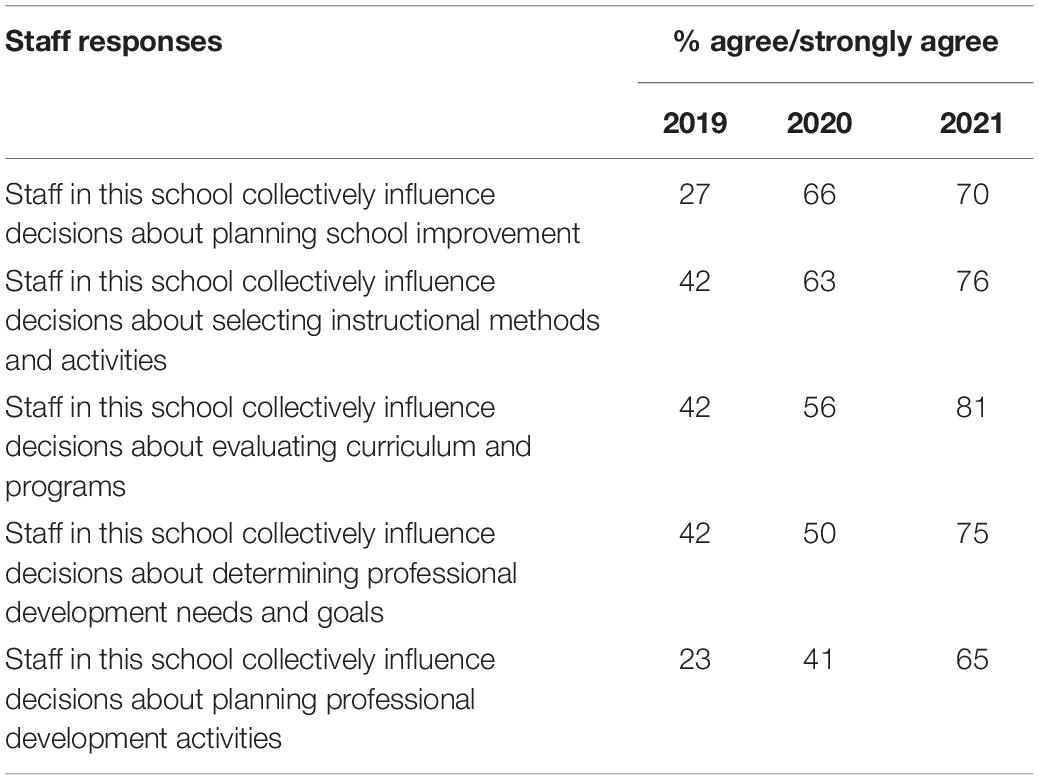
Table 2. School staff survey – teacher collaboration in school planning.
The Integration of Trauma-Informed Practices Into Instructional Practice
Social and emotional learning programs have primarily focused on improving wellbeing outcomes ( Durlak et al., 2011 ) while instructional practices have focused on improving learning outcomes ( Dinham, 2016 ). Providing trauma-informed positive education as an instructional approach in both the classroom and across the whole school enables both wellbeing and academic outcomes for students ( Stokes and Turnbull, 2016 ). Aligning trauma-informed practices with ongoing instructional practices can bolster teacher implementation of trauma-informed practices into the school ( Overstreet and Chafouleas, 2016 ).
In many of the interviews, staff members commented that in the past they were losing instructional time due to multiple critical incidents occurring both inside and outside of the classroom each day. These incidences were often in the form of violent outbursts or escalations that would derail the delivery of instruction—and wasted precious instructional time. As a result of the TIPE professional learning and the clear direction of leaders (following consultation with teachers and educational support staff) decisions were made to implement a range of TIPE strategies adapted to their own school context. The instructional model changed over time and contained classroom strategies and practices that assisted students to learn skills to build networks of support, feel confident as learners and manage difficult and challenging emotions when learning.
At a whole school level, the leaders made decisions to implement a non-punitive response to behavior management. This was based on the TIPE professional learning to first understand what had been in place at the school where the punitive discipline approach ignored the complex histories of the children with whom they were working ( Costa, 2017 ). Instead, both leaders and teachers learnt the importance of support and avoiding actions that might trigger escalated power-laden responses in children ( Bath, 2008 ; Shonkoff et al., 2012 ; Carello and Butler, 2015 ).
A year 7 leader described the school’s prior response to behavioral issues which would impede a focus on instruction:
It’s gone from a punitive to a restorative kind of practice…we used to have detentions and all that type of stuff and that never worked, ever. Because it just, it wasn’t a timely reaction to what was going on and it wasn’t a meaningful reaction to what was going on. I used to be on the detention duty a lot and there’d be kids from all different year levels and they’re like, “Why am I here?”
I’d check the learning management system and have to say, “You’re here because you were being disrespectful,” and, their response was often, “I wasn’t doing that, and when was it?” Last week. They’re like, “Last week, why am I here now?” Because the detentions would carry over.
A student in year 12 described the behavior she used to see and the punitive responses that teachers used which completely distracted from her learning:
Just really, really bad behavior. Kids always getting sent out, learn nothing. They’d never come back or they’d get – we used to do like red slips, and you’d get sent out of class with that but then they’d just walk away…Something that just never worked with students.
This change in discipline policy required a wholesale shift toward a proactive mindset for leaders and teachers in this school. A teacher described the changes she has seen:
I’ve seen a change in this staff as well, the way they interact with students and the way that they communicate with them. I think they probably de-escalate them more than they heighten them, which is a big – from when I started. I think that some of the things that teachers said before were heightening students, and I don’t think they realized it. I did at the start too. I didn’t realize how to communicate with them.
I wasn’t enquiring with students, it was more that I would say to them, “Can you sit down?” Rather than, “Hey, what’s going on? Why are you standing up today?” Instead of, I would always – when I first started, I’d sort of jump to the – just telling them what to do rather than asking them what’s going on with them. A lot of the time they have a reason.
At the whole school level, school leaders developed a process that assisted them to support teachers and students in the process of being ready to learn. If a student is not ready to learn they may enact one of their Ready to Learn strategies (for example, walking outside the classroom for 5 min). Teachers webbex school leadership to notify if a student is leaving the classroom. All leaders are rostered on at different times to be in the corridors checking in (with non-confrontational approaches) with the students who are using their Ready to Learn Plans to take time out of the classroom. All leaders, teachers and school staff have been trained in TIPE approaches to be non-confrontational and walk side by side with students and at all times be focused on assisting students to understand their emotions and then move when ready back to learning in the classroom.
The youth worker described how he perceives the changes in the student management at the school:
I think the biggest contributors to changes in the school so far, what I’ve seen, is the trauma-informed positive education stuff. The structures that are in place for support when things happen, make a huge difference. They can just rely on that. The follow-up, the immediate follow-up, the follow-up afterward, if something would happen, Previous to that we didn’t have any of that. It was probably more punitive, rather than understanding as well.
The non-punitive response to behavior management was then enacted in the classroom by teachers, with the support of leaders, using TIPE strategies. The trauma-informed instructional strategies included all-staff agreements to enact: consistent transition and entry routines; Ready to Learn Plans in which students self-selected de-escalation and self-regulation strategies agreed upon with the teacher for use inside and just outside the classroom; brain breaks and mindfulness to renew focus on learning; deliberately building stamina for learning by visually charting and celebrating increasing minutes on task each day; and identification of micro moments of off task behavior as an early point of behavioral intervention (instead of waiting for a “bigger escalation” to occur which the teachers were doing before their trauma-informed professional learning).
The school leaders commented that in the past, escalated and disorganized student transitions between classes and activities were having a negative impact on instructional time in the classroom. Leaders commented that teachers were taking up to 20 min of instructional time getting their students settled after recess and other teachers were feeling let down by inconsistent transition routines between the prior teacher to the next teacher.
As discussed with the school leaders, teachers and staff at the TIPE professional learning, crisp, clear and consistent transitions that co-regulate students quickly and maximize learning were critical to both trauma-informed practice and learning more generally ( Robinson and Gray, 2019 ). At the core is the premise that leaders must see student and teacher time as a valuable resource to strategically manage to maximize learning ( Robinson and Gray, 2019 ). Leaders then supported a change to transition routines across the school. As one teacher commented:
The entry routines have been really good this year. A lot of the staff are doing them every single time. They’re waiting at the door, waiting for everyone to line up and then they’re greeting each student as they come in. I think that’s really good because you walk down the hallway and the kids are calm going into class.
As students entered the class, teachers did a quick emotional check in to see how the students were feeling about school. Two students explained how this worked in their classes. One explained the strategy.
Our maths and English teacher asks between ‘one-to-five’ how do we feel and how has the day gone so far? One is not even good, you don’t want to be at school but you’re at school, five is being you’re great, you’re at school, you want to learn and everything and they ask us what number are we? So if we say 2.5 they go, okay, you’re still at school but you’re in between. Then we prompt the students to use a strategy from their plan to boost to the next number if that will help for learning.
The other student explained why the teachers were doing the strategy.
It’s so the teachers can see who is stressed, who doesn’t want to be at school but they’re still at school. So, there’s something wrong in between somewhere so they can help that student out. We have to focus on strategies that build self-regulation.
Another strategy that teachers used to maximize instructional time for all students was the Ready to Learn Plan. These are a pre-agreed upon plan between student and teacher which empowered the student to enact a de-escalation or self-regulation strategy before returning to the learning task. A student explained what happens:
They’re just like, show us on your hands how you’re feeling today, from one to five. If people are one or two, the teachers go up to them and ask them what’s wrong and if they want to use their Ready to Learn Plan.
A school leader described the importance of Ready to Learn Plans to their classroom management strategy:
It’s really important at this school that kids are not in the classroom if they’re not able and ready to be doing what’s happening in there. We can’t expect them to self-regulate by themselves in the classroom without support.
A student described how Ready to Learn Plans empowered him manage his own behavior proactively:
If I’m feeling like aggravated or just really unsettled, I’ll use my Ready to Learn Plan and go get a drink. Just have a little walk outside.
This was reinforced by another student who commented:
Students that suffer from bad behavior, they’re just not having a good day, the Ready to Learn Plan is so good because it gives that student a second chance, which I think is really good.
One of the teachers described some of the benefits of the Ready to Learn Plan :
It’s a more settled environment and the students also have a feeling that they’re being listened to. It gives them an opportunity to have a voice, but also to reflect on their own thinking and behaviors and are they focused and ready to come into class.
Once the class was in progress there were strategies that teachers used throughout the lesson to maintain focus on effective instructional delivery. The instructional strategies that teachers and students consistently reported were: mindfulness; “brain breaks” (giving the whole class an opportunity to pause, breathe, anchor themselves with a prompt and return to learning); strategies to build stamina for learning and identification of early micro moments of off task behavior.
The strategies place a priority focus on increasing opportunities for students to focus on the academic work. While they appear to be strategies for student wellbeing, they are also strategies to improve learning with an alignment of both wellbeing and instructional strategies to assist implementation ( Overstreet and Chafouleas, 2016 ). Students have an opportunity to practice mindfulness, in addition to brain breaks which provide opportunities to move their bodies, take a breath, and build stamina for learning. Brain breaks were mentioned by teachers as something they could easily add to their classroom routines:
The brain breaks I feel, like in the teams that I was in last year and I’m in this year, I think that they came in quickly and it’s one of those things that it’s an easy implementation and the kids were responding well. I can’t imagine teaching without break breaks anymore. How on earth do you make them concentrate that long? No wonder we had so much trouble.
Students were consistently prompted by their teachers to consider what strategies were working well for them. A student commented on how they preferred brain breaks to mindfulness:
I like the brain breaks because it’s like for 5 min then we’re back doing work. So, I can sit still or do other things in brain break.
Mindfulness goes a bit too long. Some of the kids didn’t want to do it because they couldn’t sit still. I have to be doing something more physical.
Concurring with the findings of Robinson and Gray (2019) , leaders commented that teachers having proactive strategies to build on-task abilities “1-min at a time” for students who are quick to give up and avoid the task, is a critical component for improving student learning capabilities.
One leader described the work on stamina particularly in reading.
There were strategies where we had visually tracked their on-task learning with ‘stamina charts’ in classrooms where kids were doing independent reading for just 2 min because that’s all they could handle, now they’re doing it for 20 min which is all we need in the hour lesson to give them opportunity to increase reading success.
Finally, the TIPE strategy that teachers regularly mentioned was identification of “micro moments of off task behavior.” This strategy staff to move toward an early-intervention mindset with a focus on instructional time. Prior to their TIPE professional learning, teachers were not attuned to these micro moments of student escalation or off-task disengagement (hoping the adverse behavior would go away if ignored). The shift in early identification across the school sharpened the teachers’ collective ability to quickly identify the point of successful intervention and support with students struggling to de-escalate. One of the teachers described the importance of understanding micro moments but also the mental work that that level of awareness takes:
Seeing body language and how that’s going to impact when they come into the classroom and how you might spend a little extra time with them just at the door to give them a bit extra direction or a little bit extra conversation. A little bit extra that you’re keeping a watchful eye but knowing that there’s trigger points for that student that you can go over and quietly talk to them as opposed to remind them out loud of something.
So, you’re watching for those moments and changing what you do for that student. That, I think that’s a huge impact. I’m not going to lie to you, it’s tough though, because you’re constantly looking for these moments and every single student needs to be in your mind and how they’re reacting and behaving to each other, to you, to the work, to the classroom setting.
These strategies are similar to what other schools have put in place when implementing trauma-informed positive education (see Stokes and Turnbull, 2016 ; Stokes et al., 2019 ; Stokes and Aaltonen, 2021 for further examples of this work in schools). Developing the whole of school non-punitive behavior management response has taken the implementation of TIPE to a whole school level that is relevant for this school context. These changes to the school and classroom environment were reflected in the student responses in the AtoSS to their understanding of the effective use of class time (see Table 3 ).

Table 3. Attitudes to school survey – effective teaching practices for learning.
Following the implementation of the TIPE strategies, there have been positive outcomes for students at the school. These have included: the creation of an orderly environment for learning and an increase in positive student attitudes to school.
The Creation of an Orderly Environment for Learning
The creation of an orderly and safe environment for learning, underpins the opportunity for educational improvement in a school and must be included in a teacher’s instructional approach ( Robinson, 2011 ; Sebastian and Allensworth, 2012 ). Leadership in this area is important so that students can experience increased academic and wellbeing outcomes ( Marzano et al., 2005 ). Practices include clear and consistent discipline codes, high expectations for social behavior and a caring environment ( Robinson, 2011 ).
One of the leaders described what the school had been like and the impact of that on both staff and students:
The staff not turning up to work was massive in the past. Oh, he’s away again today, or she’s away. It was pretty rough before I got here. Some kids had had three teachers, different teachers in the same class in one term, so there was a great lack of relationships, so last year was the start of building good relationships with kids across the school.
While a teacher commented on the behavior she found when she came to the school a couple of years ago:
It was chaotic. Kids would come and go. They would be happy to verbally abuse anyone that came within 30 cm of them, even if you just looked at them…I think a lot of teachers struggling to make it through the day. Now it’s quite calm in comparison.
The students described what school had been like for them and how it had changed.
It used to be very ‘you do the work and you listen to me.’ Now it’s – “the teachers work with us.”
The teachers are more like listening to students, sort of working with them and stuff like that. More cooperative.
The students described more positive relationships with teachers as TIPE has been implemented in their school. This support for students who may be trauma affected concurs with research conducted by Berger (2019) on the impact of trauma informed professional practice.
This change in the learning environment, including shifting teacher practice that is caring and supportive with clear and consistent non-punitive discipline responses has been reflected in the change in the last 3 years of data from both staff climate surveys and student attitude to school surveys (AtoSS). Table 4 reflects the impact that the training, implementation and leadership support of trauma-informed positive education has had for teachers in the classroom. In 2019, only 15% of teachers responded that the learning environment in the school was orderly and focused. This changed to 53% in 2020 as trauma-informed positive education was being implemented and 89% as it was consolidated in the school.
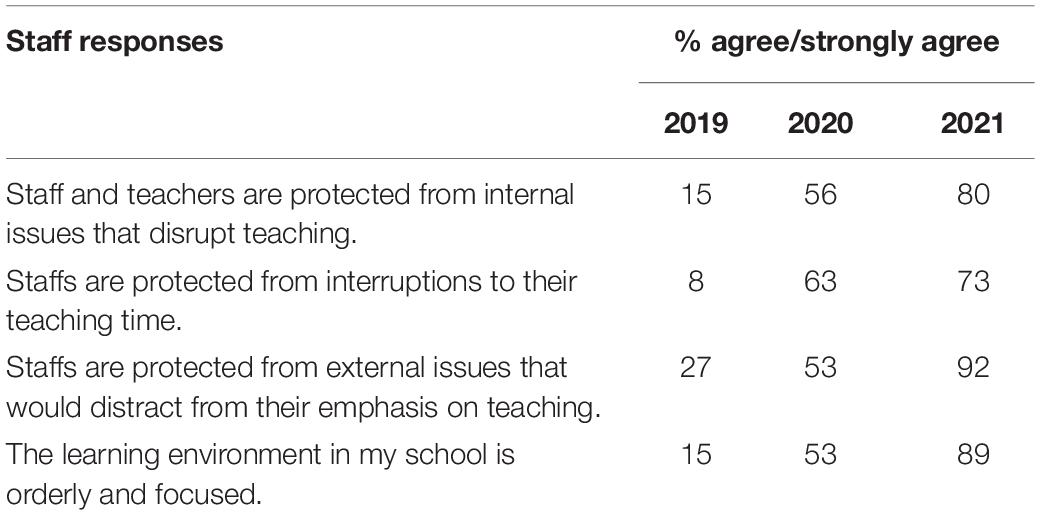
Table 4. School staff surveys – the learning environment.
These findings are further supported by the Student AtoSS of the classroom environment. As can be seen from the Table 3 student responses on effective use of class time moved from the bottom quartile to the top quartile in the state from 2019 to 2021. This was the same period of time that the trauma-informed positive education training was undertaken by all school personnel and staff began implementing the strategies. In 2019 only 5.5% of students felt there was effective teaching time in comparison to all students in the rest of the State. This changed to 56.1% in 2020 and 88% in 2021.
An Increase in Positive Student Attitudes to School
Within the current case study, there were noticeable shifts in the ways students positively viewed their school, their teachers, and their peer-community. It is asserted that these changes were due to proactive changes to teachers’ instructional practice yielding changes in student perceptions of the school itself and thus, this cohort of students developed the ability to apply these wellbeing resources for readiness to learn. The change in student perceptions of the school was reflected in both the interview responses and from the AtoSS survey data over the past 3 years.
Comments from students included:
Yeah, it’s a lot better place to be. Like it used to be very – quite violent in a way. Like, mentally straining here because yeah, the teachers just wouldn’t listen to you.
The teachers that we have now are just all-round nicer people. Genuine. They’re not just doing it because it’s their job. They genuinely want to see us succeed.
These comments reflect the change in the way students and teachers interact and the corresponding change in student behavior and care shown by teachers toward the students.
The AtoSS survey data in Table 5 show the change of the last 3 years as TIPE has been implemented in the school. Student connectedness to school has moved from the bottom quartile compared to other students in the state to the top quartile, as has self-confidence, self-regulation (a particular focus of trauma-informed positive education), and high expectations for success. Students perceiving teacher were concerned about them was higher in 2019 at 39% than many other measures but this as well has moved to the top quartile (88.6%) in 2021. As Bryk (2010) notes students feeling that most teachers care about them is a measure of their engagement with school.
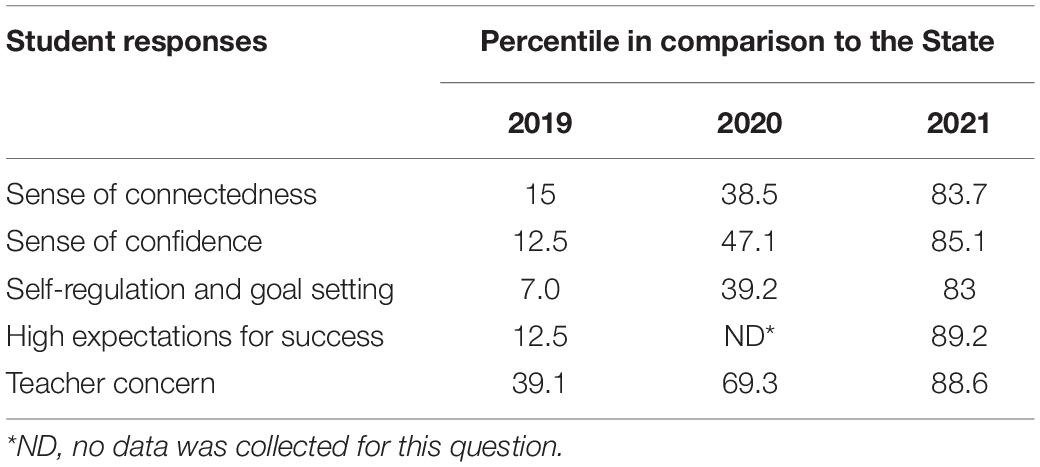
Table 5. Attitudes to school survey – social engagement and expectations.
The School Staff survey in Table 6 further supports these changes in positive student attitudes to school with 69% of staff trusting their students in 2021 compared to 11% in 2019. In 2019, 43% of staff felt that students cared about each other, and this has risen to 76% in 2021.

Table 6. School staff surveys – staff trust in students.
Fredrickson and Joiner (2002) have shown that when primed with positive emotion and the opportunity to increase positive outlook, young people increase the likelihood of developing psychological resources for improved coping with daily adversities. Reciprocally, they also showed that increased capabilities in coping skills predicted both increases in experiencing positive emotions over time and the ability to employ social resources (e.g., connecting with one’s peers in healthy ways). When students are given opportunities to nurture psychological resources for their own wellbeing such as healthy coping skills, management of their own resilient self-talk strategies, and identifying their own strengths, they increase capacity to achieve their own goals for learning ( Seligman et al., 2009 ).
A case study approach has been used to explore a school that has implemented trauma-informed practices as an instructional approach over the last two and a half years. The aim of this approach has been to show the ways in which trauma-informed education can be fully integrated for learning and wellbeing.
For leaders at this school, the explicit development and implementation of a TIPE approach, designed for the context of the school, brought about change. Underpinning this was the TIPE professional learning using an AIPAR cycle that provided opportunities for leaders working with teachers and educational support staff to understand issues and needs and then co-create responses to those needs. With the support of TIPE professional learning, the school leadership team were able to harness multiple levers (such as the development of a non-punitive discipline response) toward shifting staff mindsets from reactive to proactive. In addition, the consistent whole school use of TIPE strategies assisted them to proactively support the creation of classroom environments to enable students to be ready to learn.
The school has undertaken a process to implement strengths-based, positive education strategies. At this stage of the research, many of the strategies were located in the Body, Relationship and Stamina domains. Further work in the school will focus on the Engagement and Character domains as it is critical that teachers and all school staff remember that students made vulnerable due to trauma and adverse childhood experiences have inherent character strengths within them. These students require daily reminders of the inherent value they contribute to the school and what is right with them on their journey of both healing and growth.
This study’s mixed-method case study design drew together relevant data on the school’s trauma-informed instructional approach including trauma-informed education practices, students’ attitudes to school, leading instruction and the impact of the TIPE professional learning. The results offer promise to future researchers and education leaders seeking a holistic way to support school transformation journeys with underpinning evidence; and furthers the call to focus on the implementation and sustainability of trauma-informed education strategies.
Data Availability Statement
The raw data supporting the conclusions of this article will be made available by the authors, without undue reservation.
Ethics Statement
The studies involving human participants were reviewed and approved by University of Melbourne, Human Ethics Committee HASS 1. Written informed consent to participate in this study was provided by the participants or their legal guardian/next of kin.
Author Contributions
HS constructed the research framework, conducted the research in the schools then developed the literature, collected and analyzed the data through coding, developed the themes and then wrote the findings and discussion according to the themes.
Berry Street (No. 300781) and Brotherhood of St. Lawrence (No. 302406) commissioned the research from the University of Melbourne in the three schools on the programs they were running in the three schools.
Conflict of Interest
The author declares that the research was conducted in the absence of any commercial or financial relationships that could be construed as a potential conflict of interest.
Publisher’s Note
All claims expressed in this article are solely those of the authors and do not necessarily represent those of their affiliated organizations, or those of the publisher, the editors and the reviewers. Any product that may be evaluated in this article, or claim that may be made by its manufacturer, is not guaranteed or endorsed by the publisher.
- ^ https://www.education.vic.gov.au/PAL/data-collection-school-staff-survey-framework.pdf
- ^ https://www.education.vic.gov.au/PAL/attitudes-to-school-survey-framework.pdf
Alvord, M. K., and Grados, J. J. (2005). Enhancing resilience in children: a proactive approach. Prof. Psychol. Res. Pract. 36, 238–245. doi: 10.1037/0735-7028.36.3.238
CrossRef Full Text | Google Scholar
Anda, R. F., Felitti, V. J., Bremner, J. D., Walker, J. D., Whitfield, C., Perry, B. D., et al. (2006). The enduring effects of abuse and related adverse experiences in childhood. Eur. Arch. Psychiatry Clin. Neurosci . 256, 174–186. doi: 10.1007/s00406-005-0624-4
PubMed Abstract | CrossRef Full Text | Google Scholar
Australian Bureau of Statistics (2020). 2016 Census QuickStats. Available online at: quickstats.censusdata.abs.gov.au/census_services/getproduct/census/2016/quickstat/SSC20942 (accessed May 15, 2020).
Google Scholar
Australian Curriculum Assessment and Reporting Authority [ACARA] (2020). My School. Available online at: https://www.myschool.edu.au (accessed March 25, 2022).
Bath, H. (2008). The three pillars of trauma-informed care. Reclaim. Child. Youth 17, 17–21
Baxter, P., and Jack, S. (2008). Qualitative case study methodology: study design and implementation for novice researchers. Qual. Rep. 13, 544–559:
Berger, E. (2019). Multi-tiered approaches to trauma-informed care in schools: a systematic review. Sch. Ment. Health 11, 650–664. doi: 10.1007/s12310-019-09326-0
Bishop, A., Berryman, M., Wearmouth, J., and Peter, M. (2012b). Developing an effective education reform model for indigenous and other minoritized students. Sch. Effect. Sch. Improv. 23, 49–70. doi: 10.1080/09243453.2011.647921
Bishop, R., Berryman, M., Wearmouth, J., Peter, M., and Clapham, S. (2012a). Professional development, changes in teacher practice and improvements in Indigenous students’ educational performance: a case study from New Zealand. Teach. Teach. Educ. 28, 694–705. doi: 10.1016/j.tate.2012.02.002
Bond, L., Butler, H., Thomas, L., Carlin, J., Glover, S., Bowes, G., et al. (2007). Social and school connectedness in early secondary school as predictors of late teenage substance use, mental health, and academic outcomes. J. Adolesc. Health 40, 357.e9–357.e18. doi: 10.1016/j.jadohealth.2006.10.013
Brennan, N., Beames, J., Kos, A., Reily, N., Connell, C., Hall, S., et al. (2021). Psychological Distress in Young People in Australia, Fifth Biennial Youth Mental Health Report: 2012-2020. Sydney: Mission Australia
Brunzell, T. (2017). “Healing and growth in the classroom: a positive education for trauma-affected and disengaging students,” in Future Directions in Well-being: Education, Organizational and Policy eds M. A. White, G. R. Slemp and A. S. Murray (Cham: Springer), 21–25. doi: 10.1007/978-3-319-56889-8_4
Brunzell, T. (2019). Meaningful Work for Teachers Within a Trauma- Informed Positive Education Model. Unpublished thesis. Parkville VIC: University of Melbourne.
Brunzell, T. (2021). “Trauma-aware practice and positive education,” in The Palgrave Handbook on Positive Education , eds M. L. Kern and M. Wehmeyer (Cham: Palgrave Macmillan), 205–223. doi: 10.1007/978-3-030-64537-3_8
Brunzell, T., and Norrish, J. (2021). Creating Trauma- Informed Strengths-Based Classrooms. London: Jessica Kingsley Publishers.
Brunzell, T., Norrish, J., Ralston, S., Abbott, L., Witter, M., Joyce, T., and Larkin, J. (2015). Berry Street Education Model: Curriculum and Classroom Strategies . Melbourne, VIC: Berry Street Victoria.
Bryk, A. (2010). Organizing Schools for Improvement. Chicago, IL: University of Chicago Press. doi: 10.1177/003172171009100705
Carello, J., and Butler, L. D. (2015). Practicing what we teach: trauma-informed educational practice. J. Teach. Soc. Work 35, 262–278. doi: 10.1080/08841233.2015.1030059
Catalano, R. F., Haggerty, K. P., Oesterle, S., Fleming, C. B., and Hawkins, J. D. (2004). The importance of bonding to school for healthy development: findings from the social development research group. J. Sch. Health 74, 252–261. doi: 10.1111/j.1746-1561.2004.tb08281.x
Cook, A., Spinazzola, J., Ford, J., Lanktree, C., Blaustein, M., Cloitre, M., and Liautaud, J. (2005). Complex trauma in children and adolescents. Psychiatr. Ann. 35, 390–398. doi: 10.3928/00485713-20050501-05
Cornelius-White, J. (2007). Learner-centered teacher-student relationships are effective: a meta- analysis. Rev. Educ. Res. 77, 113–143. doi: 10.3102/003465430298563
Costa, D. A. (2017). Transforming Traumatised Children within NSW Department of Education Schools: one School Counsellor’s Model for Practise – REWIRE. Child. Aust . 42, 113–126. doi: 10.1017/cha.2017.14
Day, A. G., Somers, C. L., Baroni, B. A., West, S. D., Sanders, L., and Peterson, C. D. (2015). Evaluation of a trauma-informed school intervention with girls in a residential facility school: student perceptions of school environment. J. Aggress. Maltreat. Trauma 24, 1086–1105. doi: 10.1080/10926771.2015.1079279
de Arellano, M. A., Ko, S. J., Danielson, C. K., and Sprague, C. M. (2008). Trauma-Informed Interventions: Clinical and Research Evidence And Culture-Specific Information Project . Los Angeles, CA: National Center for Child Traumatic Stress.
Denscombe, M. (2003). The Good Research Guide , England. Maidenhead: Open University Press.
Dinham, S. (2008). How to Get Your School Moving and Improving: An Evidence-Based Approach . Melbourne. VIC: Australian Council for Educational Research Press.
Dinham, S. (2016). Leading Learning and Teaching. Melbourne, VIC: Australian Council for Educational Research Press.
Dodge, R., Daly, A. P., Huyton, J., and Sanders, L. D. (2012). The challenge of defining wellbeing. Int. J. Wellbeing 2, 222–235. doi: 10.5502/ijw.v2i3.4
Downey, L. (2012). Calmer Classrooms: A Guide to Working with Traumatised Children. Melbourne, VIC: Child Safety Commissioner.
Durlak, J. A., Weissberg, R. P., Dymnicki, A. B., Taylor, R. D., and Schellinger, K. B. (2011). The impact of enhancing students’ social and emotional learning: a meta-analysis of school-based universal interventions. Child Dev . 82, 405–432. doi: 10.1111/j.1467-8624.2010.01564.x
Fredrickson, B. L., and Joiner, T. (2002). Positive emotions trigger upward spirals toward emotional well-being. Psychol. Sci. 13, 172–175. doi: 10.1111/1467-9280.00431
Hemphill, S. A., Plenty, S. M., Herrenkohl, T. I., Toumbourou, J. W., and Catalano, R. F. (2014). Student and school factors associated with school suspension: a multilevel analysis of students in Victoria, Australia and Washington State, United States. Child. Youth Serv. Rev. 36, 187–194. doi: 10.1016/j.childyouth.2013.11.022
Howard, J. A. (2019). A systemic framework for trauma-informed schooling: complex but necessary! J. Aggress. Maltreat. Trauma 28, 545–565. doi: 10.1080/10926771.2018.1479323
Knapp, M. S. (2003). Chapter 4: professional development as a policy pathway. Rev. Res. Educ. 27, 109–157. doi: 10.3102/0091732X027001109
Leithwood, K., Harris, A., and Hopkins, D. (2019). Seven strong claims about successful school leadership revisited. Sch. Leadersh. Manage 40, 5–22. doi: 10.1080/13632434.2019.1596077
Line Seligman, M. E. P., and Csikszentmihalyi, M. (2000). Positive psychology: an introduction. Am. Psychol. 55, 5–14. doi: 10.1037/0003-066X.55.1.5
Ludema, J. D., and Fry, R. E. (2008). “The practice of appreciative inquiry,” in Handbook of Action Research , 2nd Edn, eds P. Reason and H. Bradbury (London: Sage), 280–296. doi: 10.4135/9781848607934.n27
Ludema, J. D., Cooperrider, D. L., and Barrett, F. J. (2006). “Appreciative inquiry: the power of the unconditional positive question,” in Handbook of Action Research , eds P. Reason and H. Bradbury (London: Sage), 155–165.
Marzano, R., Waters, T., and McNulty, B. (2005). Some Theories and Theorists on Leadership.School Leadership that Works: From Research to Results , ASCD. Available online at: https://books.google.com.au/books?hl=en&lr=&id=UfNQBAAAQBAJ&oi=fnd&pg=PR5&dq=school+leadership+that+works+marzano&ots=qhs1Mzi6r5&sig=7AUgdwHwJmj_PhlUVePVd3MctmI#v=onepage&q=school%20leadership%20that%20works%20marzano&f=false (accessed March 25, 2022).
Mashford-Scott, A., Church, A., and Tayler, C. (2012). Seeking children’s perspectives on their wellbeing in early childhood settings. Int. J. Early Child . 44, 231–247. doi: 10.1007/s13158-012-0069-7
Miles, M. B., and Huberman, A. M. (1994 11). Qualitative Data Analysis , 2nd Edn. Newbury Park, CA: Sage.
Overstreet, S., and Chafouleas, S. M (2016). Trauma-informed schools: introduction to the special issue. Sch. Ment. Health 8, 1–6. doi: 10.1007/s12310-016-9184-1
Perry, B. D. (2009). Examining child maltreatment through a neurodevelopmental lens: clinical applications of the neurosequential model of therapeutics. J. Loss Trauma 14, 240–255. doi: 10.1080/15325020903004350
Peterson, C., and Seligman, M. E. P. (2004). Character Strengths and Virtues: A Handbook and Classification . Washington, DC: American Psychological Association.
Porche, M. V., Costello, D. M., and Rosen-Reynoso, M. (2016). Adverse family experiences, child mental health, and educational outcomes for a national sample of students. Sch. Ment. Health 8, 44–60. doi: 10.1007/s12310-016-9174-3
Resnick, M. D., Bearman, P. S., Blum, R. W., Bauman, K. E., Harris, K. M., Jones, J., et al. (1997). Protecting adolescents from harm: findings from the National Longitudinal Study on Adolescent Health. JAMA 278, 823–832.: doi: 10.1001/jama.278.10.823
Robinson, V., and Gray, E. (2019). What difference does school leadership make to student outcomes? J. R. Soc. N. Z . 49, 171–187. doi: 10.1080/03036758.2019.1582075
Robinson, V. (2011). Student-Centered Leadership , Vol. 15. Hoboken, NJ: John Wiley & Sons.
Robinson, V. M., Lloyd, C. A., and Rowe, K. J. (2008). The impact of leadership on student outcomes: an analysis of the differential effects of leadership types. Educ. Adm. Q . 44, 635–674. doi: 10.1177/0013161X08321509
Sebastian, J., and Allensworth, E. (2012). The influence of principal leadership on classroom instruction and student learning: a study of mediated pathways to learning. Educ. Adm. Q . 48, 626–663. doi: 10.1177/0013161X11436273
Seligman, M. E. P., Ernst, R. M., Gillham, J., Reivich, K., and Linkins, M. (2009). Positive education: positive psychology and classroom interventions. Oxford Rev. Educ. 35, 293–311. doi: 10.1080/03054980902934563
Shonkoff, J. P., Garner, A. S., Siegel, B. S., Dobbins, M. I., Earls, M. F., McGuinn, L., et al. (2012). The lifelong effects of early childhood adversity and toxic stress. Pediatrics 129, e232–e246. doi: 10.1542/peds.2011-2663
Stake, R. E. (1995). The Art of Case Study Research . London : Sage
Stokes, H., and Brunzell, T. (2019). Professional learning in trauma informed positive education: moving school communities from trauma affected to trauma aware. Sch. Leadersh. Rev . 14:6.:
Stokes, H., and Turnbull, M. (2016). Evaluation of the Berry Street Education Model: Trauma Informed Positive Education Enacted in Mainstream Schools. Melbourne, VIC: University of Melbourne.
Stokes, H., Turnbull, M., Forster, R., and Farrelly, A. (2019). Young people’s voices, young people’s lives: A Berry Street Edcuational Model (BSEM) project. Melbourne, VIC: University of Melbourne.
Stokes, H, and Aaltonen, S (2021). Time–space paths and the experiences of vulnerable young people in alternative educational settings, Int. J. Inclusive Educ. doi: 10.1080/13603116.2021.1994663
Sullivan, A. M., Johnson, B., Owens, L., and Conway, R. (2014). Punish them or engage them? Teachers’ views of unproductive student behaviours in the classroom. Austral. J. Teach. Educ. 39, 43–56. doi: 10.14221/ajte.2014v39n6.6
Thompson, P., Kriewaldt, J., and Redman, C. (2020). Elaborating a model for teacher professional learning to sustain improvement in teaching practice. Austral. J. Teach. Educ 45, 81–103. doi: 10.14221/ajte.2020v45n2.5
Van der Kolk, B. A. (2005). Developmental trauma disorder: toward a rational diagnosis for children with complex trauma histories. Psychiatr. Ann . 35, 401–408. doi: 10.3928/00485713-20050501-06
Victorian State Government Department of Education and Training (2021). School Staff Survey. Melbourne, VIC: Victorian Department of Education and Training.
Victorian State Government Department of Education and Training [VIC DET] (2022b). Framework for Improving Student Outcomes (FISO 2.0). Melbourne, VIC: Victorian Department of Education and Training.
Victorian State Government Department of Education and Training [VIC DET] (2022a). Attitudes to School Survey Framework. Melbourne, VIC: Victorian Department of Education and Training.
Vinson, T., Rawsthorne, M., Beavis, A., and Ericson, M. (2015). Dropping off the Edge 2015. Persistent Communal Disadvantage in Australia. Jesuit Social Services/Catholic Social Services Australia. Available online at: https://www.researchgate.net/publication/299389688_Dropping_off_the_edge_Persistent_communal_disadvantage_in_Australia/link/56f34ea308ae38d7109a5818/download (accessed March 25, 2022).
Wahlstrom, K., and Seashore-Louis, K. (2008). How teachers experience principal leadership: the roles of professional community, trust, efficacy, and shared responsibility. Educ. Adm. Q. 44, 458–495. doi: 10.1177/0013161X08321502
Waters, L. (2011). A review of school-based positive psychology interventions. Austral. Educ. Dev. Psychol. 28, 75–90. doi: 10.1375/aedp.28.2.75
West, S. D., Day, A. G., Somers, C. L., and Baroni, B. A. (2014). Student perspectives on how trauma experiences manifest in the classroom: engaging court-involved youth in the development of a trauma-informed teaching curriculum. Child. Youth Serv. Rev . 38, 58–65. doi: 10.1016/j.childyouth.2014.01.013
Wiliam, D. (2014). The Formative Evaluation of Teaching Performance. Melbourne, VIC: Centre for Strategic Education.
Wilkins, R., Vera-Toscano, E., Botha, F., and Dahmann, S. (2021). The Household, Income and Labour Dynamics in Australia Survey: Selected Findings from Waves 1 to 19 . (Parkville VIC: University of Melbourne), 110–117.
Wolpow, R., Johnson, M. M., Hertel, R., and Kincaid, S. O. (2009). The Heart of Learning and Teaching: Compassion, Resiliency, and Academic Success. Olympia, WA: Washington State office of Superintendent of Public Instruction Compassionate Schools.
Keywords : school leadership, instructional practice, wellbeing, professional learning (PL), trauma affected
Citation: Stokes H (2022) Leading Trauma-Informed Education Practice as an Instructional Model for Teaching and Learning. Front. Educ. 7:911328. doi: 10.3389/feduc.2022.911328
Received: 02 April 2022; Accepted: 08 June 2022; Published: 24 June 2022.
Reviewed by:
Copyright © 2022 Stokes. This is an open-access article distributed under the terms of the Creative Commons Attribution License (CC BY) . The use, distribution or reproduction in other forums is permitted, provided the original author(s) and the copyright owner(s) are credited and that the original publication in this journal is cited, in accordance with accepted academic practice. No use, distribution or reproduction is permitted which does not comply with these terms.
*Correspondence: Helen Stokes, [email protected]
This article is part of the Research Topic
Trauma-Informed Education

Creating safe, nurturing, and inclusive learning environments for all students
TIPPS translates research and shares strategies that help students realize their potential and become more resilient to the effects of trauma.
Our 10 Core Pillars
Our model of a trauma-informed school is based on 10 core pillars:

Our research-based guides provide information and resources to support the selection, implementation, and sustainment of trauma-informed programs and practices.

Program Guide
This guide gives school and district leaders, teachers, and other professional staff a comprehensive overview of trauma-informed strategies for schools.

White Paper
This white paper gives a brief overview of adversity, trauma, and resilience. The paper also introduces the TIPPS framework and the 10 core pillars for implementing trauma-informed programs and practices.

Sources of adversity and trauma can be found in homes, schools, and communities. These experiences can affect the development of children and the physical and mental health of adults.
The TIPPS team is made up of students, faculty, researchers and community partners who have extensive expertise in childhood adversities, trauma, and resilience.
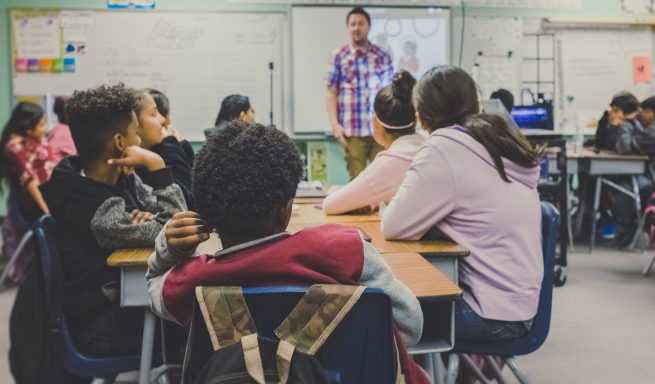
Want TIPPS updates? Enter your email address and subscribe to our newsletter.
Faculty Scholarship
Research on trauma-sensitive schools offers timely insights.
Researchers confirm transformational benefits of a trauma-sensitive approach developed by the Trauma and Learning Policy Initiative at HLS
As the world confronts the collective and unprecedented trauma of a public health and economic crisis—exacerbated by systemic racial inequities—understanding the impact trauma has on the ability of children to learn is more important than ever. A new report suggests that schools that have adopted recommendations developed by the Trauma and Learning Policy Initiative (TLPI) — a nationally recognized collaboration between Harvard Law School and Massachusetts Advocates for Children (MAC) — are uniquely positioned to understand and respond to the impact these crises, and the resulting trauma, are having on students, families, and educators.
A recently released report, “An Evaluation of the Trauma and Learning Policy Initiative’s Inquiry-Based Process: Year Three,” published by BU Wheelock College of Education & Human Development, confirms the transformational benefits of a trauma-sensitive school culture as developed by TLPI and set forth in their landmark report, “ Helping Traumatized Children Learn: Creating and Advocating for Trauma-Sensitive Schools ” (HTCL). Since HTCL was first published in 2005, more than 95,000 copies have been distributed to schools and educators in Massachusetts and across the country.
Over a three-year period, a team of researchers at Boston University studied several Massachusetts schools that have adopted an inquiry based process for creating trauma sensitive schools The team evaluated the efficacy of an inquiry-based process and the sustainability of trauma-sensitive culture changes in the schools that used TLPI’s recommended approach.
The researchers concluded: “Overall, this evaluation provides evidence for profound impacts that schools’ engagement with TLPI’s inquiry-based process, with the requisite level of commitment and focused effort, can have for leadership, staff, students, and families. Lasting changes reported by educators were multi-leveled, and included shifts in both thinking and practice. … This study suggests that, while this transformation may take time and effort to cultivate, the outcomes it generates may be more sustainable than other education reform approaches.”
Susan Cole , a lecturer of law at Harvard Law School and director of TLPI, stated, “Understanding trauma and engaging in a collaborative process of change that brings this understanding into everything we do creates a powerful pathway to helping all students learn both in school and remotely. It was a relief to watch trauma-sensitive schools jump into action as soon as the pandemic occurred. A deep understanding among all staff, combined with leadership and teamwork that prioritizes and values relationships, connection, belongingness, safety, family engagement, and student agency, can enable schools to adapt to any situation with positive results.”
HLS Clinical Professor Michael Gregory ’04, who co-teaches the Education Law Clinic at Harvard Law School with Cole, said: “The significant finding in this study—that an inquiry-based process of change guided by a set of compassionate and equitable values can help educators begin to transform their school cultures in a relatively short period—offers a paradigm change not only for schools but also for legal advocacy. These insights will help to fuel our teaching and our clinic students’ advocacy for years to come.”
The American Institutes for Research (AIR) earlier reported that the first two years of data provided evidence that an understanding of trauma-sensitivity in the context of a process of change can lead to shifts in practice that result in a range of positive outcomes for both students and staff members. Additionally, the AIR researchers found that these new ways of thinking and changes in practice can serve as a foundation for school-wide culture change that enables students and their educators to feel safe and supported to learn and be successful.
The Year Three evaluation provides an evidence base that educators’ deepening understanding of the impact of trauma on learning and participation in a collaborative, inquiry-based process will lead to shifts in thinking that recognize the foundational importance of a welcoming and inclusive learning environment for students’ academic success. Importantly, the evaluation found that school leadership and staff reported cultural and organizational shifts in their schools that clustered into four emergent themes:
• facilitating empowerment and collaboration
• integrating whole‐child approaches
• affirming cultural identity and promoting a sense of belonging
• re‐envisioning discipline toward relational accountability
“The work of building a safe and supportive, trauma-sensitive school community over the last five years has been critical during crises like these,” said a principal of an elementary school studied in the Year Three Report. “When we were initially faced with the pandemic and resulting school closures and shifts to online learning, every single staff member was called to action and immediately prioritized the safety and well-being of all students. They continue to amaze me as they prepare for the new school year this fall to ensure that we not only provide meaningful lessons to keep students engaged in learning, but strive to really connect with students to let them know we truly care about them and will continue to support them and their families in any way we can.”
Modal Gallery
- Skip to content
- Skip to search
- Staff portal (Inside the department)
- Student portal
- Key links for students
Other users
- Forgot password
Notifications
{{item.title}}, my essentials, ask for help, contact edconnect, directory a to z, how to guides.
- Centre for Education Statistics and Evaluation
Trauma-informed practice in schools: An explainer
This report was originally published 28 January 2020.

- 2020 trauma informed practice in schools (PDF 444 KB)
This explainer briefly summarises the evidence on trauma-informed practice within an educational context. It is intended as a brief introduction to the topic for teachers, principals and other school staff. It provides information on six key questions:
- What is trauma?
- How prevalent is developmental trauma among children in NSW ?
- How can teachers and school staff recognise behaviours related to trauma?
- What is trauma-informed practice?
- What strategies can schools and teachers use to support students impacted by trauma?
- How can schools care for staff who are supporting students impacted by trauma?
Some links to further reading are provided within the text for readers wanting a more advanced understanding of developmental trauma and trauma-informed practice within an educational context.
How to use this resource
Purpose of resource.
The Trauma-informed practice in schools: An explainer resource briefly summarises the evidence on trauma-informed practice within an educational context.
When and how to use
The resource is review of research evidence and is accompanied by a Trauma-informed practice discussion guide . School leaders and teachers can read, reflect on, discuss and implement themes and strategies highlighted in the resource as part of school-developed High Impact Professional Learning (HIPL) .
The appropriate time to use this resource may differ for each school, leader and teacher.
School leaders can:
- unpack the resource, using the accompanying discussion guide , as part of whole-school professional development and/or stage or grade team meetings
- encourage teachers to share key findings during professional development
- reflect on strategies, policies or practices currently in place to support students impacted by trauma, as well as staff who are supporting these students
- lead discussions with staff about areas to improve across the school – you may wish to refer to the Achieving School Excellence in Wellbeing and Inclusion tool
- email Trauma-Informed Practice at [email protected] to schedule the Trauma-informed Practice for Improved Learning and Wellbeing professional learning for their school.
Teachers can:
- read the resource and reflect on policies and strategies currently in place at their school or in their classroom that support a trauma-informed practice approach
- unpack the resource, using the accompanying discussion guide , in a group setting
- refer to the additional reading provided in the resource to further develop their understanding of developmental trauma and trauma-informed practice within an educational context
- identify strategies to apply in the classroom to support students impacted by trauma
- reflect on the impact of the applied strategies.
Email feedback about this resource to [email protected] using subject line ‘Trauma-informed practice in schools: An explainer’. You can also subscribe to the CESE newsletter and connect with us on Yammer .
Alignment to system priorities and/or needs:
NSW Department of Education Disability Strategy
NSW Department of Education Inclusive, Engaging and Respectful Schools policy
Alignment to School Excellence Framework: Learning domain – wellbeing; Teaching domain – effective classroom practice, learning and development
Alignment with existing frameworks: Australian Professional Standards for Teachers – Standards 1, 4, 6
NSW Wellbeing Framework for Schools – Connect, Succeed, Thrive
Disability Standards for Education
Reviewed by: School Services and Disability Strategy Implementation directorates
Created/last updated: Originally published 28 January 2020
To be reviewed: CESE publications are prepared through a rigorous process. Resources are reviewed periodically as part of an ongoing evaluation plan
Related resources
- Trauma-informed practice discussion guide
- Research report
Business Unit:
- Our Mission
Teachers Need Trauma-Informed Care, Too
Many teachers deal with chronic stress and trauma, and these strategies help focus on adult well-being.

In schools across the country, teachers are receiving training in how to create trauma-informed classrooms. They’re hearing about the impacts of trauma on the body and mind and the ways in which trauma can manifest in students’ classroom behaviors, attendance, and retention. Administrators will rehearse new scripts for dealing with misconduct in ways that center empathy and restorative practice. Many schools will become places that make responding to trauma something that is transformative. Yet few will consider and address adults’ trauma.
Since the creation of the term trauma-informed care (TIC) in 2001, education has been a leading field in the world’s pursuit to understand the connections between body, mind, and behavior. As a subject matter expert with over 10 years of experience in trauma-informed care, I am encouraged to see how far-reaching this theoretical approach to interpersonal dynamics has become. However, the absence of teacher and administrator care resounds.
While the myriad needs of the students whom we serve are paramount, trauma-informed care isn’t sustainable when educators are also traumatized or chronically stressed. As teachers, we may learn in professional development about how adverse childhood experience (ACE) scores impact learning, but not about how our own scores may impact our capacity to compartmentalize. We may hear that a calm prosody in our voice is key, then turn around to hear belittling words from those with whom we work, said in the exact manner that we were just told to refrain from.
Teaching demands that we give, give, give. But what if we feel like we have nothing left to offer?
Empty Cup Syndrome
I created the term Empty Cup Syndrome (ECS) to describe what so many of us have felt: like we are emotionally dry but expected to have a wellspring to draw from. Worse yet, sometimes our burnout is punished, creating a cycle of shame and reprimand. In discussions about teacher turnover rates, the prospects of raising salaries and boosting benefits get much applause, but the teachers who struggle with bullying from peers and students, or who are worked past exhaustion, are overwhelmingly ignored.
ECS is real and requires systemic support. However, pushback can come from all sides. Years ago, I heard a principal argue during a training session that they were there to help traumatized students and that adult teachers should know how to handle the stress of their past without any additional help. They went on to suggest that any teacher at their school who complained of ECS should switch schools, and possibly careers. “We spend hours learning about the polyvagal systems of our students, but nothing about how our own nervous systems need help—and that’s not another pizza lunch or jeans day,” one attendee commented.
From Covid-19 to school-based violence, teachers need trauma-informed care more than ever. With these realities in mind, what can we do to create holistically trauma-transformed schools?
Remember: Many Teachers are Trauma Survivors, Too
From childhood trauma to recent events such as domestic or dating violence, medical trauma, and more, teachers and administrators often navigate their own real trauma. In my first teaching position, I watched as an educator was let go because they were a victim of domestic violence. The fact that they had shared in confidence that they were fleeing abuse was justified as a danger to the campus, and instead of amping up security for everyone, they were dismissed and left to be more vulnerable to further harm.
A few years ago, a teacher disclosed to me that they were sexually assaulted on a date and had to go into the classroom the next day and act as if everything was fine. Just as we switch the script from asking why a student is misbehaving to what might be the story behind their behavior, so should we do the same with our colleagues. If a teacher seems disengaged, depressed, or overwhelmed, instead of looking at these behavioral manifestations as the problem, we can instead ask that individual how we can better support the roots of their observable actions and emotions.
Respect Each Other’s ‘Spoons’
Spoon Theory is a concept created by Christine Miserandino that individuals with disabilities and chronic illnesses use to describe limited stamina. It reminds us that everyone has a different level of energy to expend throughout the day, and for some people, that energy is not easily replenished, and using it all can have devastating consequences.
Many teachers have visible and invisible disabilities that add to their stress load, and everyone, regardless of ability, can check in and ask who is feeling depleted and who has a little extra energy, and strategize together about redistributing the energy load. Doing so may look like having teachers take turns co-planning lessons, offering regular check-ins where teachers can ask for help with tasks, and/or providing accommodations (e.g., noise-decreasing earplugs, chairs instead of required standing, etc.). These micro efforts can have systemic impacts on well-being and retention.
Prevent and Destigmatize Secondary Trauma
Any discussion of trauma-informed care should also center secondary trauma , a potential consequence of exposure to students’ and colleagues’ trauma, and offer teachers research-informed tools with which to address it. For example, offering teachers longer or more frequent break times, options for collegiate coaching, counseling, chaplaincy, and/or support groups can all go a long way.
So many of these resources are low to no cost, while others do require a reallocation of resources. But which would we rather have: the cost of more support services, or the cost of high turnover and frequent onboarding?
Pouring from an empty cup may be something that we have long excused as coming with the territory of teaching, but it doesn’t need to be our future. Our students need trauma-informed care in every aspect of their learning, and to live up to this objective, our teachers need to receive it, too.
Mental Health at Iowa

Trauma-Informed Support
Recently there has been a lot of talk in academia about trauma-informed leadership practices and what can be gained from them. Trauma-informed leadership considers the effect trauma can have on communication and learning. For many years I thought “trauma” could only result from a catastrophic experience, and that those experiences were singular and uncommon. Given the ongoing tumult of the last several years, I think all of us can now say that we have experienced trauma on some level, and more importantly, the students we work with every day have experienced it (whether that’s the word they would use for it or not). Trauma-informed practices can help us all as teachers, leaders, and learners. So, what are trauma-informed practices and how do we implement them?
Before we delve into the practices, we need to rethink our definition of trauma. Trauma is actually not tied to a particular type of event; in fact, no event is inherently traumatic. Trauma only arises in a situation when our internal resources are not able to cope with external stressors; that sense of powerlessness causes us to record it as traumatic.
Judith Herman, in her book Trauma and Recovery , states, “ Traumatic events [are events that] overwhelm the ordinary systems of care that give people a sense of control, connection, and meaning .... Traumatic events are extraordinary, not because they occur rarely, but rather because they overwhelm the ordinary human adaptations to life.”
Thinking about our students and the kinds of rapid adaptations that are required of them as they transition out of their childhood home and into a campus environment, we can start to understand why something that we take for granted could be traumatizing to someone with different (and perhaps inadequate) coping mechanisms. Students can easily become overwhelmed by the demands on them, and this can have a negative effect on both students and the university community.
Furthermore, the effect of trauma on an individual is not always what we expect. I used to believe that trauma-sufferers must show obvious signs of distress, but traumatized individuals can exhibit a range of maladaptive behaviors that mask what is happening inside: automatic distrust of authority figures, disinterest in work or friendships, difficulty focusing, memory lapses, indecisiveness. Outwardly, a traumatized person might seem uninterested, confrontational, or immature. We might assume someone is spoiled or undisciplined when trauma has actually diminished their ability to function.
Luckily, there are things that we can learn how to do as teachers and leaders to help traumatized people build resiliency. According to the Substance Abuse and Mental Health Services Administration’s (SAMHSA’s) concept of a trauma-informed approach, a program, organization, or system that is trauma-informed:
- Realizes the widespread impact of trauma and understands potential paths for recovery;
- Recognizes the signs and symptoms of trauma in clients, families, staff, and others involved with the system;
- Responds by fully integrating knowledge about trauma into policies, procedures, and practices; and
- Seeks to actively resist re-traumatization.
First, trauma-informed leaders always prioritize safety. Even after a traumatic situation has ended, traumatized individuals often feel as if the stress or trauma is continuing. This leads to hypervigilance, which takes up an enormous amount of energy and diminishes space for curiosity, exploration, and learning. If leaders prioritize safety in our words and actions, we can open the door to building trust with a traumatized individual.
Part of creating a safe environment means being transparent with our expectations. Professors can do this by creating clear lesson plans, providing multiple channels for students to receive information about the course, and making it clear how students can get answers to their questions (posting office hours, having an email policy). For managers, this can mean meeting with employees and clarifying rules and expectations, and putting things in writing so both parties can refer to the agreed upon terms.
Developing a culture of appreciation can also foster a sense of safety and community, in both classroom and work environments. Positive feedback, celebrating milestones, and giving thoughtful and meaningful rewards can build a healthy, collaborative culture where everyone feels seen and valued. These efforts can create a psychologically safe environment that allows students to feel that they can participate in discussions without being shamed or laughed at, and employees can know that their presence matters, and their contributions are valued.
There are many more ways that we can incorporate a trauma-informed approach to our work. For more information, take a look at the web page developed by First Year Seminars with information and links about how to incorporate trauma-informed practices in the classroom: https://fys.uiowa.edu/toolkit/trauma-informed-teaching .
University of Iowa employees have access to the LinkedIn Learning program “Becoming a Trauma Informed Leader that can be viewed it the following link: UIowa LinkedIn Learning - "Becoming a Trauma Informed Leader"
Our undergraduates can complete a certificate in Resilience and Trauma Informed Perspectives administered by the School of Social Work. Mental Health at Iowa also maintains a webpage with more information: https://mentalhealth.uiowa.edu/recovery/trauma-informed-care
For more information on trauma-informed leadership and upcoming online training opportunities, check out the Association of Mental Health Coordinators at www.associationmhc.com/training .
Cover image by Getty Images Signature .
- About Barry
- Find Your Program
- Financial Aid
- Living on Campus
With our Catholic liberal arts heritage and over 100 degree programs, including nursing and marine biology, from bachelors through PhDs, we've got your options covered. Focus on arts and sciences, business, education, social work, communication, nursing, medical sciences, theology, or law. Take things further with personalized research and experiential learning opportunities, on and off-campus. Enhance your prospects with hands-on internships at some of the country's top organizations.
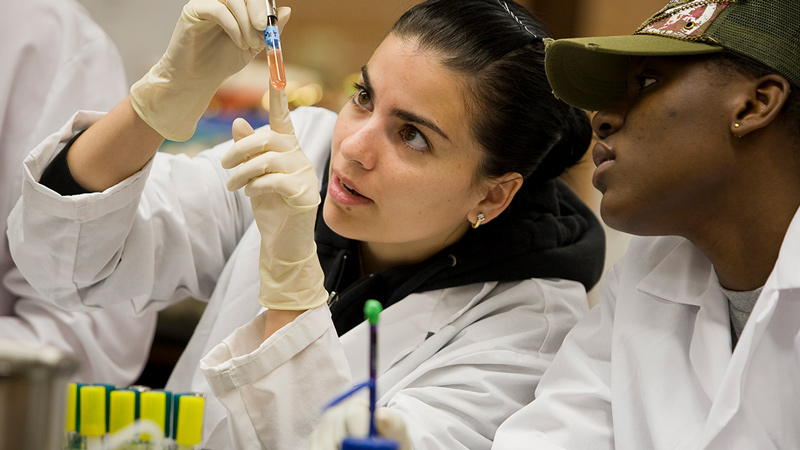
- Colleges and Schools
- College of Arts and Sciences
- School of Business and Public Administration
- School of Education, Leadership, and Human Development
- College of Health and Wellness
- School of Law (Orlando)
- School of Nursing
- School of Podiatric Medicine
School of Social Work

- Academic Support
- Center for Academic Success and Advising (CASA)
- Learning Center
- Testing Center
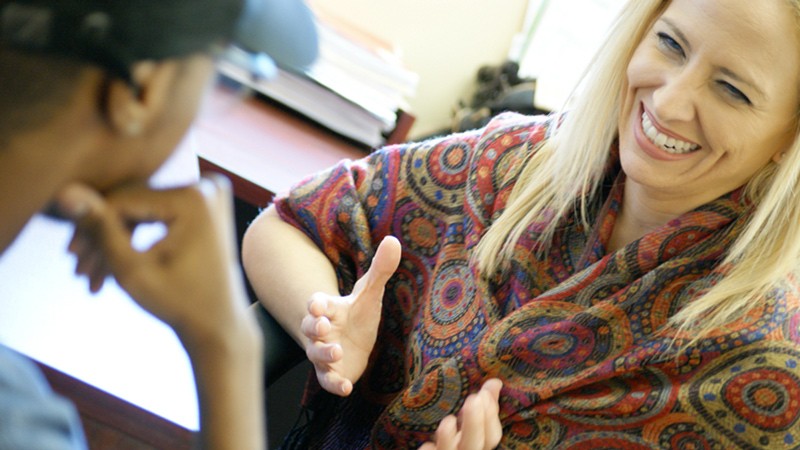
- Enrollment Services
- Student Accounts
- Student Services Center
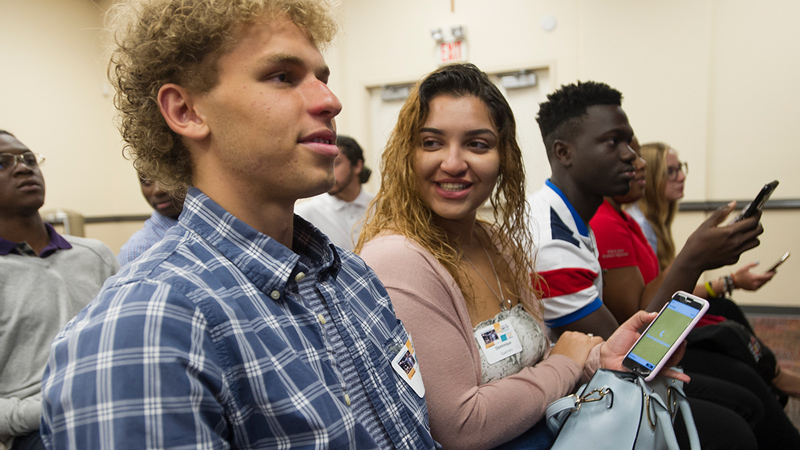
The path to your perfect career begins with planning and support. Career Development has resources for you to help you make the most of your time at Barry. Guidance is just an appointment away.
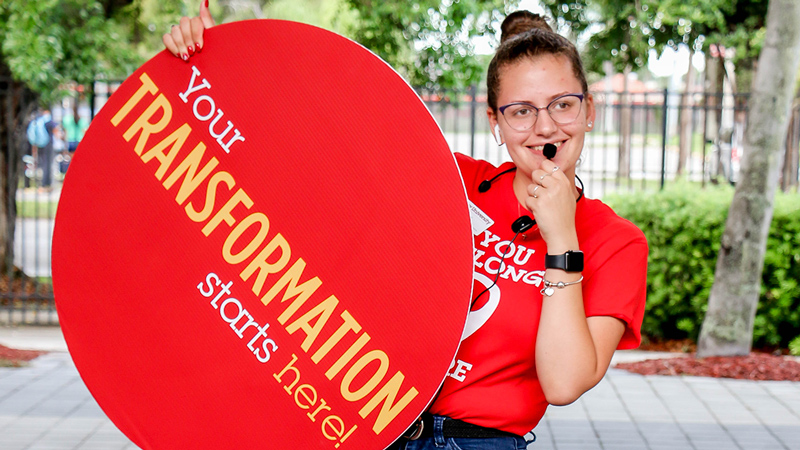
Service-learning integrates relevant community service with course work and critical reflection to enrich the learning experience, foster social responsibility and civic engagement, and strengthen communities.

The Honors Program at Barry is designed to challenge, enrich, and prepare especially motivated students to pursue their fullest potential. By participating in a rigorous curriculum rounded out by an array of edifying and interactive events, students explore crucial issues that we face in our daily lives. Students are given the space for discussion and debate and the opportunity to learn from experts in their fields. The Office of Financial Aid can assist with determining eligibility for the Honors Program.

The Monsignor William Barry Memorial Library is located in the center of the beautiful Miami Shores campus of Barry University. The Library is named in loving memory of Monsignor William Barry, one of the founders of Barry University and an inspirational figure in the Catholic Church within the Archdiocese of Miami. The extensive Library research collections include more than 950,000 physical items, over 40,000 print and on-line journal subscriptions, and several thousand on-line books and streaming video resources.
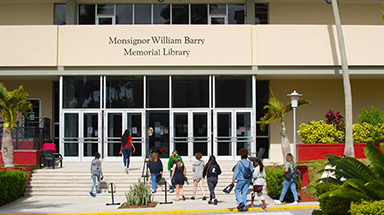
At Barry University, you will experience a small community atmosphere where you can always rely on our administrators and faculty for advice, encouragement and personal attention. We take great pride in giving individual attention from the very beginning. You can start building a personal relationship with one of our admissions counselors who will help answer any questions, and guide you through the entire admissions and enrollment process.

- Undergraduate
- How to pay for college
- International Students
- Financial Aid FAQs

- Graduate and Doctoral
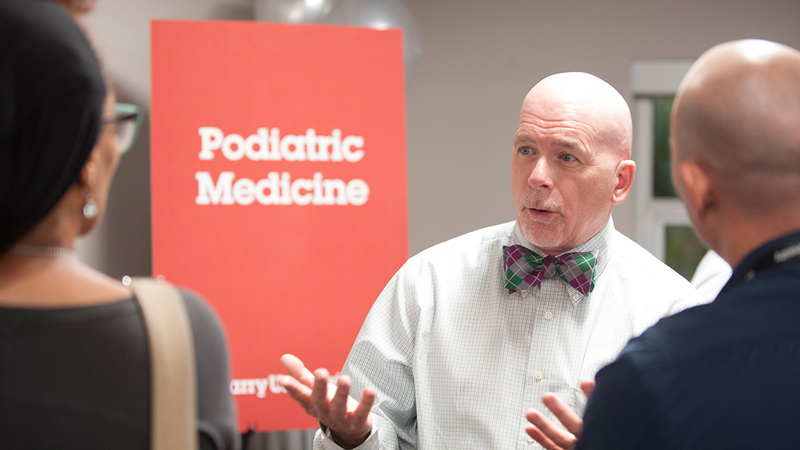
- Adult learners
- Degree-Completion Programs

- Admitted Students

Continuing Education (CE) offers a variety of courses and non-credit programs designed to respond to the diverse educational interests and lifelong learning needs of individuals of all ages. We offer certificate, credential exam preparation, and licensure programs for professional and personal enrichment.
High school students: Get a jump-start on your college education with dual enrollment courses from Barry University! You can earn high school and college credit at the same time, right at your own school.

We are committed to providing programs and services that are guided by Barry University's rich educational mission and intended to enhance your Barry experience. Through partnerships with others in the university community, we aim to create experiences that will help transform you into leaders for a just and humane world.

We are an NCAA Division II school and a member of the Sunshine State Conference with 12 varsity teams, including men's baseball, basketball, golf, soccer and tennis; and women's basketball, golf, rowing, soccer, softball, tennis and volleyball. So far, we've won 24 NCAA championships, had 338 All-Americans, 413 Scholar All-Americans, and nine NCAA "Women of the Year" finalists, the most of any Division II school. Not bad at all, but we're going for more.

- Campus Life
- Living on-campus
- Office of Student Life

For students currently enrolled in classes at Barry, we have a wealth of resources you can tap into to bring ease and efficiency to your university experience. Get the help you need with administrative or financial questions, or check out course catalogs to help plan your schedule by semester. All the information you need to excel is at your fingertips.

- Skill Development and Well Being
- Accessibility Services
- Campus Recreation
- Counseling & Psychological Services
- Health Promotion and Wellness
- Health Services
- Public Safety

- Student Engagement
- Campus Ministry
- Center for Community Service Initiatives (CCSI)
- DePorres Center for Ethical & Inclusive Leadership
- Housing and Residence Life
- International Programs
- New Student Programs
- Office of Mission Engagement
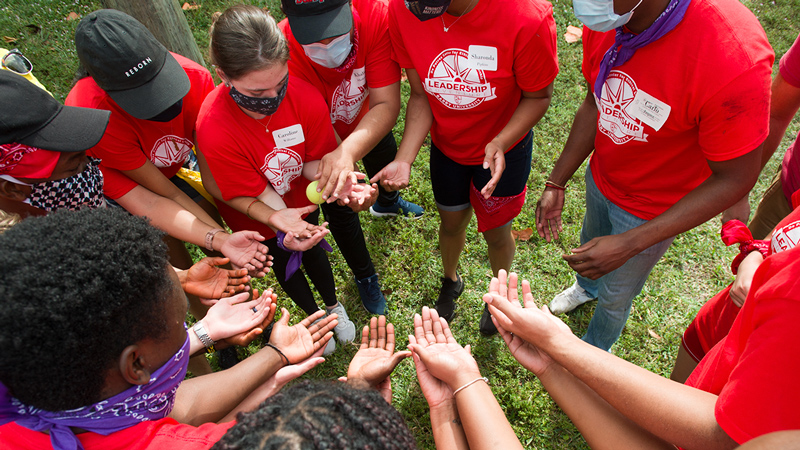
- Student Resources
- Dual Enrollment

- Doctorate of Social Work

Doctor of Social Work (DSW)
12:00 PM - 1:00 PM (EST)
Graduate International Info Session
International - Graduate Admissions
Virtual Open House Week
Graduate and Adult Learner
About the Program Trauma-Informed Leadership and Practice
Our Doctor of Social Work (DSW) program is founded on a trauma-informed approach that acknowledges the widespread impact of trauma on individuals and their behaviors. Our goal is to create a safe and supportive environment that fosters healing and empowerment.
The DSW degree is specifically designed for MSW practitioners seeking a practice-focused doctoral degree in Trauma-Informed Leadership and Practice. This unique approach emphasizes the importance of understanding the unique needs and experiences of individuals who have experienced trauma. Our program prioritizes safety, trust, choice, and collaboration in all aspects of service delivery.
Our graduates are equipped with the skills and knowledge needed to become experts in trauma-informed clinical practice, program and organizational management. They are also prepared to disseminate practice-based knowledge to both the professional practice community and Schools of Social Work.
Our gold-standard curriculum immerses students in trauma-informed leadership and practice. Our distinguished faculty members conduct cutting-edge practice research, present at international conferences, and even hold elected office. Our student-centered approach ensures that you will be treated as a human being, not just a number, with caring professors and advisors who are dedicated to your success.
Our program offers a variety of opportunities to connect with peers and network with professionals in the field. This includes participation in our DSW Student Association, virtual holiday reception, peer networking group, and in-person DSW Symposium.
Upon completion of our program, you will be well-prepared to become a doctoral-level scholar-practitioner. You will be equipped to transform workplaces and shape practice in a meaningful way.
DSW Program Goals
The DSW Program’s is guided by five program goals. Graduates are expected to:
- Demonstrate expertise in advanced trauma-informed and trauma responsive social work practice.
- Utilize empirical knowledge to guide practice, service delivery, and social work education.
- Demonstrate advance competence in social justice advocacy.
- Demonstrate leadership in human service organizations, social work practice, and policymaking.
- Develop and disseminate practice relevant knowledge through a variety of channels (scholarship, peer-reviewed conferences, and teaching).
The objective is to build a cadre of advanced social work leaders, practitioners, and educators who are exceptionally educated and skilled in advanced trauma-informed social work leadership and practice.
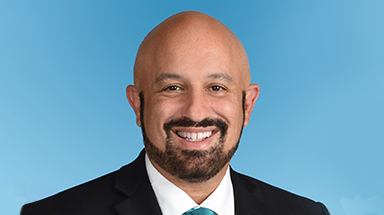
Mitch Rosenwald, PhD, LCSW Director and Professor
Welcome to our Doctorate in Social Work Program
“We are pleased you have chosen to broaden your career possibilities by deciding to advance your knowledge and skills in clinical practice, leadership, and higher education. We want to be a part of your exciting journey.”
Doctoral Symposium
The DSW students have drawn on three years of knowledge and skill development through the Trauma-Informed Leadership and Practice focus of the curriculum. The result is this compendium of Practice Advances that reflect practice enhancements from clinical protocols to national service delivery. They are submitting their Capstones as formal manuscripts to peer-reviewed journals for publication and dissemination. The students could not do this without the support of their Capstone Review Panels that include their Chairs and Second Readers.
Top Stories

Barry Grad to Serve as State Representative February 15, 2022
Barry University School of Social Work graduate Daryl Campbell (MSW ’17) will be spending a lot more time in Tallahassee!

The Center for Human Rights and Social Justice: Annual Report 2020 August 04, 2021
The Center for Human Rights and Social Justice (CHRSJ), as part of the School of Social Work, has released its Annual Report for 2020.
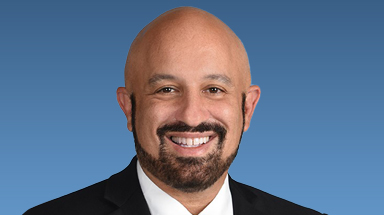
How Dr. Mitch Rosenwald Is Using His Social Work Skills To Impact Local Policy June 22, 2021
As a clinical social worker and veteran professor in Barry’s School of Social Work, Dr. Mitch Rosenwald has long championed the benefits of bringing social work perspectives to government policy.

With New Research Social Work Students And Professor Advocate For Gender-Affirming Care March 15, 2021
A new paper published in the peer-reviewed journal Psychology of Sexual Orientation and Gender Diversity is giving voice to members of the trans community who suffer from gender dysphoria.
Doctor of Social Work Student Association
The DSW Student Association, also known as the Doctor of Social Work Student Association, serves as a vital platform at Barry University. With a primary objective of offering governance, programming, and assistance, the organization caters to the specific needs of DSW students. Its mission is to ensure that graduates are equipped to become proficient in trauma-informed clinical practice, program and organizational management. Furthermore, they are encouraged to share their expertise and disseminate practice-based knowledge among the professional practice community and other Schools of Social Work. By providing essential support and fostering a collaborative environment, the DSW Student Association plays a pivotal role in the academic and professional journey of Barry University DSW students.
School of Social Work Events
- Add to calendar
Graduate International Info Session International - Graduate Admissions
Virtual open house week graduate and adult learner, admissions overview getting started.
Congratulations on taking the first step to pursue your passion, advance your career, and make a difference in your community. We are committed to assist each student through the admission process.
Whether you transition straight from undergraduate studies to a graduate program or have been out of school for some time, we offer a welcoming and professional environment for graduate study.
With small class sizes, there is a considerable amount of personalized attention from your faculty and opportunities to build strong relationships with fellow classmates.
Virtual Graduate and Adult Learner Open House Week
Attend virtual sessions to get your questions answered from April 22-25.
Financial Aid Affordable for you.
At BarryU, our tuition is competitive, affordable and still promises all the perks of a private school education. Our cost per credit is in-line with other institutions, but we offer a mission-driven educational experience and provide our students with small class sizes, personalized attention, and academic excellence. Scholarships, graduate assistantships, and financial aid can also be explored to help offset overall costs.
Barry University participates in the full array of federal and state financial aid programs. At Barry, we are committed to doing all we can to help you finance your education.
Barry University's Financial Aid staff will assist you through the financial aid application process.
Tuition for the online DSW program is $700 per credit.
Your path to social work leadership.
Connect with us.
Visit Barry!
Plan Your Meeting With Us
Virtual tour.
Explore our Campus Now
Schedule a Visit
Meet us by Phone, Online, or In-Person
Request more information
Sign in to use the pins
Skip to Content
Researchers warn of danger, call for pause in bringing AI to schools
- Share via Twitter
- Share via Facebook
- Share via LinkedIn
- Share via E-mail
In K-12 schools across the country, a new gold rush of sorts is underway: Classrooms nationwide are racing to bring the latest artificial intelligence tools, such as platforms powered by the chat bot ChatGPT, into the classroom.
Alex Molnar, a director of the National Education Policy Center (NEPC) at CU Boulder, sees a danger in this hurry to introduce AI to schools. These platforms, he said, use opaque and usually proprietary algorithms—making their inner workings mysterious to educators, parents and students alike.
“What you have is a pocketful of promises that AI will deliver as promised,” said Molnar, a research professor in the School of Education . “The problem is there is currently no way to independently evaluate the claims being made.”
In a new report, Molnar and his colleagues highlight the potential pitfalls of AI in education and call for an indefinite “pause” in integrating AI into K-12 learning. Co-authors included Ben Williamson of the University of Edinburgh in the United Kingdom and Faith Boninger, assistant research professor of education at CU Boulder.
Molnar gives his take on why AI is a risky gamble for education—and what concerned parents and others can do to get involved.

Alex Molnar
Does new technology pose risks to K-12 education?
There have been all kinds of issues associated with the use of digital platforms in schools, even before the widespread adoption of artificial intelligence.
Student data are often not properly protected. For example, there have been all kinds of leaks from third-party vendors, and there's no law or effective policy that holds them accountable. You also have an awful lot of beta testing going on in schools. Marketing claims sound good, but digital platforms often don't produce the promised results and are riddled with technical issues.
Digital technologies have made it difficult or impossible to answer fundamental questions, such as: Who's deciding the curriculum content that gets built into these platforms? Who's reviewing their work?
Could AI make those issues worse?
All of the issues related to digital technologies tend to be amplified by artificial intelligence.
So-called AI uses algorithms and massive amounts of computing power to produce results based on countless calculations of probabilities. For example, what is the probability that the next word in a sequence will be ‘juice’? These calculations do not produce ‘truth’ or even, necessarily, accuracy. They produce probabilistic output.
Currently, the construction and operation of AI algorithms is largely outside of public view and without any public accountability. Nevertheless, school people are being pushed, both by marketers and government entities, to be seen to be in the forefront of this alleged digital revolution—turning more and more school processes over to technologists with little or no knowledge of pedagogy or school curriculum.
A lot of people call AI tools a ‘black box.’ What does that mean?
To use an old-world explanation, imagine if you said, ‘I’d like to see my child’s geography textbook.’ You might say, ‘I have some issues here.’ You could talk to somebody about it, somebody who could possibly explain those issues. But with AI, you can’t do that.
You can’t go in and say, for example, ‘How did the scoring on this work?’ The answer would be, ‘Well, we don’t know.’ ‘How do we know that this content is accurate?’ ‘Well, we don’t know that, either.’
Is the concern, then, that AI might make decisions in place of educators or parents?
You can use AI to assist you in determining if a child cheated. You use it to determine whether or not a child should be in this program or that program. You can use AI to decide all kinds of things about a child, and the child is locked in with little or no recourse. Parents can complain all they want. They still can’t get the information about the basis for a decision made by AI because the principal doesn’t have it. The teacher doesn’t have it. The superintendent doesn’t have it. It’s hidden behind a proprietary curtain by a private vendor.
You advocate for a ‘pause’ in the use of AI in schools. What would that look like?
The solution would be for state legislatures to, by statute, say, in essence: Public schools in this state may not adopt artificial intelligence programs unless and until those programs are certified by this governmental entity—they’d have to create the entity. It has reviewed these programs. It has said they are safe for use, and it defines what the appropriate uses of the program are and for whom.
In other words, nothing goes in the schools until we have the statutory and regulatory framework and institutional capacity in place to independently assess AI platforms that are proposed for school use.
What can parents, or anyone else, who are concerned about this issue do?
Demand that your representatives take these issues seriously—first of all, to legislate a pause in the adoption of AI in schools. Period. Then they can ask their representatives to create a state entity that is designed to regulate the use of AI in schools.
This is a political problem. This is not a technical problem.
We have a long history of tech companies failing to follow their own rules, which are themselves laughably inadequate. For anybody who's seriously trying to figure out how to responsibly use AI in education, if they're not talking political action, they're not really talking. The technologists won’t save us.
- Education & Outreach
News Headlines
CU Boulder Today regularly publishes Q&As with our faculty members weighing in on news topics through the lens of their scholarly expertise and research/creative work. The responses here reflect the knowledge and interpretations of the expert and should not be considered the university position on the issue. All publication content is subject to edits for clarity, brevity and university style guidelines .
Related Articles

The complexity of trauma in teaching

Undergraduate’s menstrual justice project grows into policy change

What Remains founders braid migration dreams, art, stories
- Arts & Humanities
- Business & Entrepreneurship
- Climate & Environment
- Health & Society
- Law & Politics
- Science & Technology
Campus Community
- Administration
- Announcements & Deadlines
- Career Development
- Getting Involved
- Mind & Body
Events & Exhibits
- Arts & Culture
- Conferences
- Lectures & Presentations
- Performances & Concerts
- Sports & Recreation
- Workshops & Seminars
Subscribe to CUBT
Sign up for Alerts
Administrative eMemos
Buff Bulletin Board
Events Calendar
An official website of the United States government
The .gov means it’s official. Federal government websites often end in .gov or .mil. Before sharing sensitive information, make sure you’re on a federal government site.
The site is secure. The https:// ensures that you are connecting to the official website and that any information you provide is encrypted and transmitted securely.
- Publications
- Account settings
Preview improvements coming to the PMC website in October 2024. Learn More or Try it out now .
- Advanced Search
- Journal List
- Behav Sci (Basel)

Building Trauma-Informed Approaches in Higher Education
Associated data.
Not applicable.
Trauma-informed approaches serve as an essential framework for human service organizations and are now being applied in education settings, including higher education institutions (HEIs). The increasing incidence of traumatic events, including the global pandemic of COVID-19 and the systemic violence against persons of color, has prompted HEIs to examine how culture and inclusivity are conceptualized in the curriculum and reflected in institutional policy and programming. Within this context, there is a need to identify how trauma-informed approaches at HEIs can be culturally responsive. This article briefly summarizes evidence supporting the rationale for trauma-informed approaches at HEIs and how culture has historically been addressed through cultural competency and cultural humility. Cultural sensitivity and responsiveness are then conceptualized from a trauma-informed lens as informed by the literature. Finally, key concepts and theory relevant to applying culturally responsive trauma-informed approaches at HEIs are defined, with recommendations for policy, research, and practice.
1. Introduction
For the past 20 years, trauma-informed approaches have been applied to human service systems. Over time, the five core values of trauma-informed care conceptualized by Harris and Fallot [ 1 ]—safety, trustworthiness, choice, collaboration, and empowerment—have expanded to include peer support and cultural, historical, and gender issues [ 2 ]. A federally funded agency, the Substance Abuse and Mental Health Administration (SAMHSA) [ 2 ], has published guidelines for trauma-informed approaches that are nationally endorsed. While the sixth principle of trauma-informed approaches includes cultural, historical, and gender issues, further research is needed to understand how trauma-informed approaches can be culturally responsive in various institutional settings.
Federal initiatives and educational reform initially brought trauma-informed approaches into elementary and secondary schools [ 3 , 4 , 5 ]. More recently, higher education institutions (HEIs) with academic programs such as social work, nursing, education, and medicine [ 6 , 7 , 8 , 9 ] have adopted trauma-informed approaches to effectively meet students’ needs amidst the global pandemic, with cultural humility and responsiveness at the forefront following the cultural and collective trauma of George Floyd. For example, Goddard et al. [ 7 ] highlighted the student–educator relationship as being critical for supporting students’ stress regulation, suggesting that educators must embody empathy and support to create a safe base for students to learn. While research exists on the use of trauma-informed approaches in primary and secondary school systems, application at HEIs to date focuses on classroom teaching pedagogy.. Limited studies have explored the application of trauma-informed approaches in organizational systems at the broader level within HEIs.
This review will first, examine evidence that supports the application of trauma-informed approaches at HEIs. It will then summarize existing literature related to culturally responsive higher education. Lastly, key concepts and theory will be identified with recommendations to inform future research, policy, and practice. As indicated by Carello and Thompson [ 10 ], bringing trauma-informed approaches to HEIs requires acknowledging that in addition to students, educators and administrators also experience trauma, marginalization, and oppression. However, this article aims to focus on students. For the purpose of this article, the term persons of color is inclusive of Black, Latino, Indigenous persons, and Asian and Pacific Islanders.
1.1. Author Positionality
As recommended by Quiros [ 11 ], I approach the writing of this article from a trauma-informed lens and hence begin by locating myself. I am a white, Cisgender, able-bodied, middle class, straight, female, born and raised in the United States. My intersectionality is quite privileged, with experiences of oppression deriving solely from my gender identity. Being the child of an immigrant also informs my perspective of difference. As a junior faculty at a graduate school of social work and as a licensed clinical social worker, my educational frame of reference derives from social work. Due to my positionality, the knowledge that I have access to is situated culturally and academically amongst the majority group who hold more structural power; according to the American Council on Education and the U.S. Department of Education (ED), out of 700,000 full-time faculty at HEIs, 73.2% were white and 21.1% were faculty of color, with 3.1% being of international origin and 2.6% identified as having an unknown racial and ethnic background [ 12 ].
It is my aim, as an author, educator, social worker, critical ally, and human, to continuously engage in reflexive practice and critical thinking that transcend the boundaries of my privilege. This includes a commitment to questioning hegemonic structures and practices, including my own socialized assumptions and beliefs, and locating power structures and dynamics in the systems I take part in.
I consider myself a teacher/learner. My pedagogy is informed by the philosopher and educator Paulo Freire, coupled with my commitment to critical consciousness and action-oriented activism in the spaces I occupy. Freire’s philosophy includes intentionally attending to and neutralizing power dynamics in educational spheres, with a focus on dialogue and rejecting the banking method of education. This includes examining how personal and political factors interact and affect one’s work, with educators engaging students based on a relationship of mutual respect and neutrality [ 13 ].
1.2. Rationale for Culturally Responsive, Trauma-Informed Approaches in Higher Education
In higher education, the rationale for culturally responsive, trauma-informed approaches is multi-faceted. Research demonstrates that students may be exposed to trauma indirectly through the curriculum, field practicum, and while conducting research [ 14 , 15 , 16 ]. Whereas technology has made viewing traumatic events readily accessible for students contributing to individual exposures [ 17 ], advances in science have uncovered the neurobiological impact that trauma has on individual learning. Concentration, memory, executive functioning, information processing, language acquisition, and the socio-emotional aspects of learning may be affected, including class engagement with peers and instructors [ 18 ]. The human stress response to trauma, which includes numbing and/or dissociation, may be misinterpreted as lack of interest and disengagement in classroom activities and may impact behavioral challenges in field practicum related to attendance, tardiness, and overall disruption of working with clients [ 19 ].
The social environment is trauma-laden with COVID-19, racial violence and race-based trauma, active shooter events, and war [ 20 , 21 ]. Hate-based and race-based crimes against students’ cultural groups are increasing [ 22 ]. Disparities unearthed during the pandemic include COVID-19 illness and mortality rates, hate crimes based on experiences of discrimination and xenophobia, and learning [ 23 ].
COVID-19 prompted an upheaval at HEIs due to the unpredicted transition to remote learning. While the implications are still being explored, preliminary research shows significant disparities among students. For example, among UCLA students studying science, technology, engineering, and math (STEM), Barber et al. [ 24 ] found that among a sample of 947 respondents, underrepresented minority background (URM), first-generation, and low-income students were disproportionately affected due to expectations from them to help siblings at home with remote learning and to assist in addressing food insecurity and economic stress. Students’ learning was further impeded due to decreased social connectedness and sense of belonging amidst the global pandemic and lockdown—factors which have been shown to promote students’ psychosocial and academic outcomes [ 25 ].
Discrimination and xenophobia against Asian and Pacific Islander students were noted in the aftermath of COVID-19 due to the perceived location of the origin of the pandemic [ 26 ].COVID-19 mortality rates were shown to be higher among Black, African American, Latino, American Indian, Alaska Native, and Pacific Islander populations [ 27 ]. For example, during May 2020 in NYC, mortality rates for COVID-19 among Latinos were 187 per 100,000, and 184 per 100,000 among African Americans, in contrast to the mortality rate among White persons at 93 per 100,000 [ 27 ].
The data demonstrate an increase in traumatic event exposure in communities targeted by hate crimes since the onset of the pandemic. According to the U.S. Department of Justice and the U.S. Department of Health and Human Services, hate crime statistics gathered by the Federal Bureau of Investigation demonstrated an increase in hate crimes, in which 60% were directly related to race, ethnicity, or ancestry [ 28 ]. Alarmingly, there was a 30% increase in race-based hate crimes, with more than half (55%) of all race-based hate crimes driven by anti-Black bias [ 28 ]. Hate crimes against Asian individuals increased by more than 70% [ 28 ]. The second largest category of hate crimes were in reference to religion, comprising 15% of all hate crimes, and it was noted that conspiracy claims purporting that Jewish persons were spreading the coronavirus contributed to hate incidents [ 28 ].
2. Literature Review
2.1. the role of culture in trauma-informed approaches.
Culture may be defined as the values, beliefs, actions, customs, thoughts, communications, and behaviors of a racial, ethnic, religious, or social group [ 29 , 30 ]. Culture is included as the sixth principle in SAMHSA’s [ 2 ] guidelines for trauma-informed approaches under “cultural, historical and gender issues”. In their guidelines, SAMHSA asserts, The organization actively moves past cultural stereotypes and biases (e.g., based on race, ethnicity, sexual orientation, age, religion, gender identity, geography, etc.); offers access to gender responsive services; leverages the healing value of traditional cultural connections; incorporates policies, protocols, and processes that are responsive to the racial, ethnic and cultural needs of individuals served; and recognizes and addresses historical trauma [ 2 ] (p. 11).
Including this core principle represents an important paradigm shift in conceptualizing trauma-informed systems: cultural responsiveness throughout the human service organization is an explicit priority. Being “trauma-informed” means responding to the cultural needs of persons, including “issues” related to their intersectional identity, and considering historical traumas of the individual and/or cultural group [ 2 ].
The intersection of trauma and culture is well-documented. Traumatic event exposure occurs in the context of one’s culture, both the individual culture and the broader culture, and unique cultural differences influence how persons respond to trauma and perceive traumatic events [ 31 ]. According to Mohat et al. [ 32 ], historical trauma refers to a traumatic experience that is collective or experienced as a group, one that occurs over time and across generations. The nature of historical trauma is that the individual members of a group may experience trauma reactions in the present day although they were not present during the occurrence of the initial event. Thus, members of cultural groups are intrinsically connected through their shared history of trauma and resilience. Members of a cultural group can experience both external and internal reminders of historical trauma [ 33 ]. Public narratives through the media shape the dominant discourse, while lived experiences shape one’s personal experiences, which become intertwined. Thus, meaning that is ascribed to traumatic events and historical trauma becomes embedded in culture.
The power dynamics associated with historical traumas are entrenched. The core dynamics of trauma include disempowerment [ 34 ]; historical traumas that are large-scale atrocities and genocide, such as the Holocaust, slavery, etc., include narratives of oppression and disempowerment based on cultural identity. At the structural level among institutions, such as HEIs, these power dynamics may be reflected throughout system policies and practices. For example, the implicit and explicit curricula, and even the physical space of settings in terms of inclusivity. Trauma and culture may also intersect as part of one’s daily lived experience through individual interactions, including microaggressions that may trigger traumatic responses.
However, where power is stripped in the midst of trauma, whether individual or collective, there are also opportunities for resilience and growth, and trauma-informed approaches offer a unique opportunity for harnessing these strengths.
2.2. Moving Past Cultural Competence
The literature is heavily cloaked with many concepts that aim to define how to engage culturally diverse individuals and groups safely and equitably. Historically, HEIs have used the lens of cultural competence, and more recently, cultural humility. Though a systematic review of the literature is beyond the scope of this article, the following section reviews these concepts for clarification and historical context.
Cultural competence has been used for over 40 years to guide practitioners, educators, and policy makers in their process of engaging diverse populations. The concept has been explored, critiqued, and reimagined, replaced with concepts such as cross-cultural competence and multi-cultural competence. From a social work frame of reference, it has a storied history in the profession that is wrought with debate and criticism. As a concept that surfaced in the 1980s and developed over time as an essential ethical standard for social work practice, according to the National Association of Social Workers [ 30 ], cultural competence includes advocacy, activism, and “action to challenge institutional and structural oppression and the accompanying feelings of privilege and internalized oppression” (p. 10). In this framework, culture and diversity are often interchangeable in their meaning [ 35 ]. One point worthy of note is that NASW [ 30 ] operationalizes culture in alignment with SAMHSA’s sixth principle, in which culture encompasses the sociocultural lived experiences of individuals of different religion, gender, class, sexual orientation, age, and ability and is extended beyond race and ethnicity to include all aspects of intersectionality.
A major critique of cultural competence asserts that teaching cultural competence must go beyond understanding the experiences of oppressed groups and knowledge about persons who are “othered”; a critical examination of social structures and systematic oppressions, such as institutional racism, must also be included in order to avoid any implicit bias within the social work curriculum itself [ 36 ]. Additionally, the language of “competence” denotes expertise in another individual’s culture, which is a kind of mastery that is antithetical to the underlying meaning of cultural competence itself—social workers cannot master the “competence” of cultural groups through textbook learning, particularly the uniqueness of each individual within a cultural group [ 37 ].
A more up-to-date conceptualization of cultural competency in social work includes the process of social workers reflecting inward, examining their own culture—including cultural norms of socially constructed ideas related to race and other identities—and developing an awareness of personal and cultural bias [ 38 ]. It is also important to note social workers’ ethical obligation to cultural competence in the academic space, in which modeling for students is just as important as teaching in the curriculum.
2.3. Cultural Humility
The concept of cultural humility has recently been popularized and used in place of cultural competency, particularly in social work and other helping professions such as nursing and public health [ 39 , 40 ]. Cultural humility is reflexive in nature; it emphasizes self-refection and the development of awareness of one’s own power, privilege, and bias [ 41 ]. Gottlieb [ 42 ] purported that this entails a commitment to three major elements: (i) continuous self-reflection and self-awareness with the support of community, (ii) remaining open to learning and being taught about cultural difference from the standpoint of clients’ lived experiences versus how we have been instructed to define or come to understand them, and (iii) critically thinking and questioning the structural power dynamics (both power and privilege) that shape our lived realities and those of the people we work with (p. 465). Ultimately, applying the framework of cultural humility views the client as the expert and requires practitioners to consider how they may be inherently a part and a product of the very social systems we are challenging [ 42 ].
2.4. Cultural Sensitivity and Cultural Responsiveness in Trauma-Informed Approaches
Moving beyond cultural competence and cultural humility, this special issue explores the concepts of cultural responsiveness and cultural sensitivity within the framework of trauma-informed approaches. However, the concept of cultural sensitivity is used less frequently in the literature. It signifies an approach to professional practice that includes compassion for cultural differences and recognizing the role of culture in service delivery. It emphasizes attending to cultural nuances in a strengths-based manner in order to understand the cultural meanings of wellbeing [ 43 ].
In contrast, cultural responsiveness is widely discussed, frequently in the context of education and teaching pedagogy. Gay [ 44 ] defines cultural responsiveness as “using the cultural knowledge, prior experiences, frames of reference, and performance styles of ethnically diverse students to make learning encounters more relevant to and effective for them”. n applying cultural responsiveness to trauma-informed approaches, Blitz et al. [ 45 ] suggest being relationship-focused, harnessing the strengths of culture, and holding consideration for the intersection of structural oppressions and trauma. Cultural responsiveness offers space for individuals to feel culturally safe while involving them in the decision-making process [ 46 ] and asserts that knowledge is situated in historical, cultural, and social contexts [ 47 ].
Comeaux et al. [ 48 ] broadened their definition, adding the term transformative in their explication of cultural responsiveness, which this author finds herself to be most aligned with. Transformative cultural responsiveness (TCR) is defined as “an ongoing process of active learning and unlearning that leads to the capacity to recognize, understand, and effectively respond to the challenges and opportunities presented by the existence of cultural diversity of individuals and groups in different contexts and communities” [ 48 ] (p. 7). In the spirit of Freire, they suggested that TCR is a lifelong commitment to learning and unlearning, the development of critical awareness interlocking oppressions, attending to intersectionality, and moving beyond dialogue and reflection toward action [ 48 ].
3. Key Concepts and Theory to Guide Future Research and Practice
The following section highlights key concepts and theory that can be used to bridge culturally responsive trauma-informed approaches at HEIs. In order to build culturally responsive, trauma-informed programming and policy, there must be a common language and attention to discourse. How we communicate about trauma and the cultural nuances of trauma-informed approaches must be intentional.
3.1. Intersectionality
Culture is woven into an individual’s intersectional identity. Intersectionality refers to the interlocking nature of one’s social identities, including race, class, gender, sexual orientation, religion and ethnicity, age, ability, and nationality; it recognizes how these shape the privileges and oppressions that individuals may experience both individually and structurally [ 49 ]. Described by Crenshaw as a “prism for seeing the way in which various forms of inequality often operate together and exacerbate each other” [ 50 ], intersectionality is already embedded in the curriculum of many HEIs. Using an intersectional lens helps to name the power dynamics at play and to recognize the historical traumas embedded in cultural identity [ 51 ].
3.2. Critical Race Theory
Critical race theory has recently garnered attention in public spaces due to attempts by state legislatures and school boards to ban its teaching in the classroom in certain states in the U.S. [ 52 ]. This trend followed President Trump’s Executive Order to remove federal funding from diversity and inclusion training containing race and sex stereotyping or scapegoating [ 53 ]. Since the executive order, criticism has been building up due to the perception that CRT reprimands and places the blame on white persons for racism in the U.S., that CRT is unconstitutional and is disparaging, even discriminatory against white persons [ 54 ]. However, this author asserts that CRT as a theoretical framework for supporting social justice helps to achieve the opposite; rather than blaming one group, it seeks to analyze the power dynamics of institutions in order to identify and dismantle systematic racism.
While CRT centers race in this analysis, it also recognizes the intersection of race with all other elements of one’s intersectionality. At its core, CRT identifies race as a social construct and negates the notion that race is a biological construct. It recognizes the embeddedness and endemic nature of race in society through institutions, systems, and structures, as well as its interwovenness in public policy. CRT challenges the dominant ideology, including ideals of meritocracy, color blindness, and race neutrality, exposing how these claims are self-serving for groups in power to maintain the status quo [ 55 ].
3.3. Racial Trauma
Culturally responsive, trauma-informed approaches in HEIs require naming and responding to racial trauma in academic spaces. The Diagnostic and Statistical Manual for Mental Disorders (DSM-5) [ 56 ] does not specify race-based incidents in its diagnostic criteria [ 57 ]. Without a categorical structure for posttraumatic stress reactions based on raced-based experiences, the empirical evidence supporting the recognition and management of racial trauma remains scant. Due to this, racial trauma may even be underreported [ 58 ].
Comas-Diaz et al. [ 59 ] asserts that “racial trauma, a form of race-based stress, refers to People of Color and Indigenous individuals’ reactions to dangerous events and real or perceived experiences of racial discrimination” (p. 1). Racial trauma includes experiencing intimidation or threats, degradation or shaming, as well as observing these acts towards other persons of color, which can lead to dehumanization. Unique to racial trauma is the relentless re-exposure and collective nature of racism; while reactions to racial trauma mirror those to posttraumatic stress reactions, race-based trauma is both an individual’s experience and a shared experience by one’s cultural group.
3.4. Cultural Capital
Cultural capital is important to consider in culturally responsive, trauma-informed approaches at HEIs. It places cultural experiences at the center of analysis [ 60 ], and since it was developed by Bordieu, it has changed over time with various iterations. I follow Yosso’s [ 61 ] assertion that among students of color, culture can serve as a tool for nurturing and empowerment through communities of color. In this vein, cultural capital embodies the “knowledge, skills, abilities and networks” (p. 82) that students of color bring with them to school and that can be harnessed as resources, instead of being compared with the dominant culture (white, middle class communities) through a deficit-based lens. She purports that communities of color possess distinct cultural capital, which includes aspirational, familial, navigational, social, linguistic, and resistant capital. Expanding beyond communities of color, Pennell [ 62 ] suggests that a sixth form of cultural capital be included when conceptualizing queer cultural capital: transgressive capital. Transgressive capital highlights how historically marginalized communities, such as queer persons, are proactive in challenging boundaries that are oppressive, whether through institutional structures or socially constructed norms.
3.5. Critical Allyship
The framework of critical allyship suggested by Gates et al. [ 63 ] includes acknowledging biases, educating before engaging, extending the conversation beyond police brutality, targeting racism, and making critical allyship a research priority. The use of the term allyship has been corporatized and commodified. Gates et al. [ 63 ] reframed the concept as critical allyship, underscoring the connection to critical theory. Critical allyship embodies the commitment to “…interrogate experience and positionality within social relations of power and privilege” (p. 5). Similarly, Nixon [ 64 ] promotes principles of critical allyship as a vehicle for dismantling power differentials. To this end, critical allyship is associated with action and a lifelong pursuit and commitment, in which an element of sacrifice is recognized in an effort to dismantle oppressive systems.
3.6. Intentional Positive Disruption
According to Quiros [ 11 ], trauma-informed social work that embodies inclusion requires intentional positive disruption. While she applies this in the context of leadership, this framework and practice principle can be applied to create institutional cultures that foster critical thinking. This includes questioning what is considered as “normative” or “the status quo”. Use of intentional positive disruption has been echoed by Carello and Thomson [ 10 ] as an approach to trauma-informed work in academic spaces that centers equity and critically evaluates how actors and systems in education perpetuate oppression. Positively disrupting the dominant norms that perpetuate marginalization and oppression may take the form of dialogue, research, or teaching. While intentional positive disruption begins with locating one’s social position, it includes the examination of power relations within systems at the structural level.
4. Recommendations for Policy, Research, and Practice
The following recommendations are informed by the three areas in SAMHSA’s [ 2 ] guidelines for trauma-informed approaches: principles, assumptions, and domains. In addition to the six principles outlined by SAMSHA [ 2 ] discussed above, the four major assumptions offered as guidance for all trauma-informed policy and practice include: realizing the prevalence of trauma and how it affects persons; recognizing the signs and symptoms of trauma; responding by integrating knowledge about trauma and trauma recovery into policy and practice; and resisting retraumatization. Finally, the 10 domains SAMSHA [ 2 ] suggest institutions should focus on when implementing trauma-informed approaches comprise: governance and leadership; policy; physical environment; engagement and involvement; cross-sector collaboration; screening, assessment, and treatment services; training and workforce development; progress monitoring and quality assurance; financing; and evaluation.
4.1. Training and Education
Training and education must center on “moving beyond the performative” [ 11 ]. Despite the fact that diversity, equity, and inclusion trainings are trending, Ash et al. [ 65 ] assert that re-educating white leaders is necessary on an annual basis. Leaders must be willing to critically examine their own power and to be comfortable with sharing power [ 66 ]. The training and education process should focus on providing tools for self-interrogation and for locating oneself, as well as on how to recognize microaggressions, macroaggressions, and identity-based discrimination. It is critical that faculty and administrators learn the value of trauma-informed approaches as well as the effects of all forms of trauma on learning, including the lived experiences of racial trauma from a historical lens. Education and training should also include actionable steps and behaviors in order to be able to teach faculty and staff in the school community to shift from a deficit-based perspective to valuing cultural and community capital.
Tools must be offered to revise policy and programming as well as to teach members how to serve as a critical ally. As stated by Gates et al. [ 63 ], this entails going beyond the perception that serving as an ally can be “…an easily absorbed aspect of identity and being a good person” (p. 10), such as committing to “calling out” racism (p. 18). Similarly, Gray et al. [ 67 ] asserted that a “stop the line” approach should be implemented and incentivized. This approach supports individuals stepping forward to communicate any racist behavior, policy, or practice in academia, which this author recommends expanding to include the identification of any identity-based discrimination.
Program administrators and leaders at HEIs must buy into the value of trauma-informed approaches that are culturally responsive in order to model a top-down approach for faculty and staff. As asserted by SAMSHA [ 2 ], in the domains of leadership, training, and workforce development, investing in education and training on cultural responsivity within trauma-informed approaches is essential. This offers opportunities to implement trauma-informed principles of collaboration and mutuality, peer support, and empowerment among the school community that both faculty and students are able to benefit from.
4.2. Safety in the Physical and Virtual Space
Developing safety is an essential trauma-informed principle that supports transparency in communication and openness. SAMHSA’s [ 2 ] domain of the physical environment of the organization at HEIs includes not only the learning environment in the classroom and in zoom classes, but also through email communications and the physical space of the campus. For example, micro and macroaggressions, such as cultural racism, may be reflected in the manner an institution demonstrates preference for one cultural group over another [ 68 ]. Sue et al. [ 69 ] offered the example that “one’s racial identity can be minimized or made insignificant through the sheer exclusion of decorations or literature that represents various racial groups” (p. 274).
Openly communicating with transparency through program-wide emails about traumatic events in the environment that impact the school community promotes safety. It reflects that the HEIs realize the pervasive nature of trauma, recognizing its effects as being important enough to name and acknowledge. It also promotes trustworthiness and transparency through clearly discussing what resources are in place to offer support for emotional and physical safety, reinforcing that the community is physically safe. This embodies a trauma-informed approach, where individuals know what to expect. It fosters harnessing a sense of control and predictability, with the knowledge that persons impacted by trauma may be vulnerable to feeling triggered by interactions and communication where safety is not directly accounted for.
4.3. Policy and Curriculum
Promoting safety by reflecting sameness in the space is multifaceted. This can include individuals who occupy the space, such as the hiring of diverse faculty and administrators. Focusing on the domain of policy is necessary for the implementation of a trauma-informed approach that can be “hard wired” into practices and embedded within institutions such as HEIs [ 2 ] (p. 13). This intentional positive disruption is necessary to disrupt the status quo of “pervasive whiteness” [ 65 ] (p. 18).
HEIs should develop specific policies addressing equal opportunities among students for research and employment. Reducing otherness occurs when opportunities for speaking in class, research, adjunct teaching, and assistantships are inclusive of all identities. Curricula must be evaluated to ensure that courses reflect teachings that do not support a power differential of the status quo or a dominant norm. An evaluation of whether voices of historically marginalized communities are reflected in the curriculum must be conducted. This should include whether the curriculum has been created using a deficit or strengths-based lens.
4.4. Committees and Coalition Building
Carbado et al. [ 51 ] suggested that intersectionality be applied in unexplored places, highlighting how it can be used in coalition building and in developing alliances; we can recognize differences and identify commonalities. Including students of diverse intersectionality from historically marginalized communities in committees promotes empowerment, voice, and choice as well as collaboration and mutuality. This serves as intentional positive disruption to interrupt the norm of existing power differentials. Including students from historically marginalized communities in committees re-centers their voices from the margins.
Offering opportunities for students to come together through affinity groups or simply as a collective dialogue supports nearly all of SAMHSA’s [ 2 ] principles and assumptions for trauma-informed approaches. Offering space for affinity groups supports access to cultural capital and sharing lived experiences with students of diverse, intersectional identities, using intersectionality to promote connection and peer support. It empowers students with knowledge about their peers’ experiences, thus offering collaboration and mutuality. Coalitions can be built from these experiences, among faculty and students of diverse intersectionality, in order to neutralize the power differential and promote access to cultural capital.
4.5. Program Evaluation, Research, and Scholarship
Program evaluation is necessary to ensure ethical competence and to assess the outcome of the application of trauma-informed approaches that are implemented. One such measure is The Attitudes Related to Trauma-Informed Care (ARTIC) Scale. ARTIC is a previously established, psychometrically valid scale that has been modified for education settings [ 70 ]. It evaluates staff attitudes (favorable or unfavorable) toward the implementation of trauma-informed approaches. To date, the ARTIC scale has been used in education settings that include early education and K-12 school settings. Thus, program evaluation at the university level first requires conducting research that can validate the modification of ARTIC for HEI settings. Expanding the program evaluation to include qualitative measures, such as focus groups of students, further ensures progress monitoring and quality assurance. Exploring how students are impacted by the implementation of trauma-informed approaches is a necessary part of program evaluation. Including students in the research process offers opportunities for collaboration and mutuality and empowerment, voice, and choice.
This author further suggests that research be conducted to explore the lived experiences of historically marginalized students, serving as a needs assessment that evaluates identity-based discrimination on campuses. Conducting such an assessment aims to serve as an intentional positive disruption and critical allyship in order to expose the status quo and how it is experienced by all persons at HEIs. Qualitative research conducted by university faculty and students can employ a theoretical framework that is informed by CRT and intersectionality in order to ensure the centering of voices of historically marginalized communities.
CRT was originally developed to deconstruct race in law practices. However, it offers a valuable framework for exploring how the social construction of race impacts educational institutions. For example, Yosso et al. [ 55 ] asserted that CRT can be used to explore and analyze how “the social construct of race shapes university structures, practices, and discourses from the perspectives of those injured by and fighting against institutional racism” (p. 663). Following Quiros et al. [ 71 ], this author supports the application of CRT as a vehicle for challenging dominant narratives, particularly at HEIs, including the graduate schools for social work. Applying CRT ensures a commitment to ensuring that color blindness does not occur in the process of programming and policy making for students.
5. Discussion
With the increasing incidence of traumatic events, including COVID-19, racial violence, war, refugee crises, and active shooter events, trauma-informed approaches have proven beneficial in meeting students’ educational needs in the classroom as well as in field practicum, and in informing research [ 66 ]. While the professions of social work, public health, psychology, and nursing have long grappled with the concept of cultural competence, in curriculum and in practice [ 40 , 72 , 73 ], conceptualizing culture through the frame of trauma-informed approaches offers a new perspective, highlighting the intersection of trauma and culture by attending to power dynamics, history, and personal agency.
Across the literature, terms such as “critical” and “transformative” are used to expand the concept of cultural competency in order to be more inclusive and action oriented. From a social work frame of reference, this expansion is imperative; without action in policy and programming, there remains the risk of retraumatization. As the pandemic continues to unfold, students, faculty, and staff in higher education institutions endure the deleterious effects of chronic traumatic stress and loss. Teaching and learning in a shared trauma means that social work students are exposed to the same traumatic events as the clients that they are working with in their field placements [ 74 ]. Access to social media makes the viewing of traumatic events in the news and social media outlets readily available. Social media, while triggering, has contributed to accountability. That racial violence is happening every day and has an impact on students of color is an inescapable reality. Choosing to address that reality by supporting students at the institutions where they learn is an opportunity for support at the least, and for healing, at best.
This article aims to further the dialogue about trauma-informed practices at HEI.It specifically focuses on elements of cultural responsiveness through its historical review, identification of concepts and recommendations for application. Trauma-informed practices were intended for systems, and HEIs comprise large systems within institutions where power dynamics manifest at every level [ 75 ]. Menschner and Maul [ 76 ] highlighted how implementing trauma-informed approaches in healthcare systems “require a paradigm shift”(p. 10). The punctuated equilibrium of COVID-19 presents an opportunity for policy change at HEIs, for which research is needed to inform [ 77 ]. Thus, this serves as a call to action in higher education; a call to resist blissful ignorance and challenge history by naming trauma for what it is and addressing it, so that students can reach their full learning potential.
Funding Statement
This research received no external funding.
Institutional Review Board Statement
Informed consent statement, data availability statement, conflicts of interest.
The author declares no conflict of interest.
Publisher’s Note: MDPI stays neutral with regard to jurisdictional claims in published maps and institutional affiliations.

IMAGES
VIDEO
COMMENTS
Attention to childhood trauma and the need for trauma-informed care has contributed to the emerging discourse in schools related to teaching practices, school climate, and the delivery of trauma-related in-service and preservice teacher education (Cole et al., 2005; Crosby, 2015; Day et al., 2015; Oehlberg, 2008).Psychological trauma includes experiences or events that are perceived as harmful ...
Consistent with the SAMSHA principals and guidelines, an American Institute of Research report (Jones et al. 2018) on a 2-year demonstration study implementing the Trauma Learning Policy Initiative's (TLPI) Flexible Framework approach, highlights that there are multiple interrelated elements to trauma-informed schools. There is substantial momentum for trauma-informed school-wide approaches ...
OBJECTIVES. This purpose of this review was to identify, describe and synthesize the evidence of effects of trauma‐informed approaches in schools to provide guidance for policymakers and educators and to identify important gaps in the evidence base. Specifically, the research questions guiding this review include: 1.
The intent of trauma-informed school approaches is to ameliorate the impact of trauma and support healing, growth and change by leveraging all aspects of the school system inclusive of policies and procedures that collectively create safe and supportive learning environments (Bateman et al. 2013) to support the wellbeing and development of all students, enabling students to regulate their ...
Recognition that schools should be responsive to children who are impacted by adversity and trauma is burgeoning internationally. However, consensus regarding the necessary components of a trauma-informed school is lacking. This research developed expert-informed and internationally relevant best-practice trauma-informed principles for schools. A four-phase methodology included (i ...
However, unlike trauma-informed high school research, there is now a growing number of studies that focus on interventions that address adolescent social emotional learning (Jayman et al., 2019; Low et al., 2019; Venta et al., 2019). It is hoped that trauma-informed high school research will follow this latter pattern with a focus on evaluating ...
The Missouri Model for Trauma Informed Schools, an existing trauma-informed schools model, is used as a guide throughout the manuscript to highlight principles of TIC and explore the collaborative partnerships needed for TIC, particularly those between special education teachers and school counselors. ... Psychological Trauma: Theory, Research ...
In the past two decades, research on trauma-informed approaches has burgeoned across disciplines, culminating in a number of terms and definitions (Hanson & Lang, 2016). ... Developing compassionate schools and trauma-informed school-based services: An expanded needs assessment and preliminary pilot study. (Doctoral dissertation). Retrieved ...
The Integration of Trauma-Informed Practices Into Instructional Practice. Social and emotional learning programs have primarily focused on improving wellbeing outcomes (Durlak et al., 2011) while instructional practices have focused on improving learning outcomes (Dinham, 2016).Providing trauma-informed positive education as an instructional approach in both the classroom and across the whole ...
This review will include research syntheses pertaining to school-based, trauma-informed interventions for children and adolescents between the ages of 4 and 18 years with a history of adverse experiences or trauma. ... Trauma-informed, school-based interventions will be defined as any intervention conducted by individuals equipped to recognize ...
A systematic review searching foremost databases was conducted for evidence of trauma-informed school-wide approaches used between 2008 and 2019. Four papers were identified, incorporating four ...
Our research-based guides provide information and resources to support the selection, implementation, and sustainment of trauma-informed programs and practices. Program Guide This guide gives school and district leaders, teachers, and other professional staff a comprehensive overview of trauma-informed strategies for schools.
The Trauma and Learning Policy Initiative, a nationally recognized collaboration between Harvard Law School and Massachusetts Advocates for Children (MAC), recently published the second volume of its landmark report "Helping Traumatized Children Learn" which offers a guide to a process for creating trauma-sensitive schools and a policy agenda to provide the support schools need to achieve ...
Purpose of resource. The Trauma-informed practice in schools: An explainer resource briefly summarises the evidence on trauma-informed practice within an educational context.. When and how to use. The resource is review of research evidence and is accompanied by a Trauma-informed practice discussion guide.School leaders and teachers can read, reflect on, discuss and implement themes and ...
rectional and highly correlated, a trauma-informed school nurtures this relationship while maintaining its primary focus on edu-cational outcome. 5 The Role and Goal of this Framework The NCTSN System Framework for Trauma-Informed Schools provides strategic guidance in order to achieve the vision of a trau-ma-informed school described above.
Additionally, education researchers began engaging in research on trauma-informed practices in schools more recently, and as such, research emanating from education researchers comprises a small ...
Since the creation of the term trauma-informed care (TIC) in 2001, education has been a leading field in the world's pursuit to understand the connections between body, mind, and behavior. As a subject matter expert with over 10 years of experience in trauma-informed care, I am encouraged to see how far-reaching this theoretical approach to interpersonal dynamics has become.
School implementation research has found that school leadership and policies, procedures, and financing can be important to sustain trauma-informed practices.16 National policy recommendations have also emphasized implementing evidence-based interventions across a continuum of services with evaluation, progress monitoring, and quality ...
This research aims to understand the relevance of trauma- and violence-informed physical activity (TVIPA) to address unique barriers for this community. Semi-structured interviews were conducted with allied LGBTQIA+ professionals in the physical activity realm. Three key themes were developed: (1) LGBTQIA+ community members face unique barriers ...
University of Iowa employees have access to the LinkedIn Learning program "Becoming a Trauma Informed Leader that can be viewed it the following link: UIowa LinkedIn Learning - "Becoming a Trauma Informed Leader" Our undergraduates can complete a certificate in Resilience and Trauma Informed Perspectives administered by the School of Social Work.
Trauma-informed schools adopt the trauma-informed approach to "create educational environments that are response to the needs of trauma-exposed youth through the implementation of effective practices and system-change strategies" (Overstreet & Chafouleas, 2016, p. 1). ... The implications for research are clear: Trauma-informed ...
Register for the 11th Annual Trauma-Informed Care Summit. 4/1/2024. Registration is open for the 11th Annual Trauma-Informed Care Summit: A Time to Reflect, Adapt, and Innovate May 8-9 in Columbus hosted by Ohio departments of Mental Health and Addiction Services, Developmental Disabilities, Health, and Youth Services. When schools and districts provide trauma responsive supports, students and ...
Preparation in advanced trauma-informed leadership, clinical practice, and higher education. Fully online 3-year program. 9 semesters; includes continuous matriculation. Submission for publication of Advance-Practice Doctoral Capstone. ... The extensive Library research collections include more than 950,000 physical items, over 40,000 print and ...
Attention to trauma in schools has grown exponentially in recent years. Scholars Elizabeth Dutro and Erica Caasi have explored the vibrant learning that is fueled when students feel their lived stories—of joy, pain, oppression, identities, connections to family and community histories—are seen, heard and valued by schools and educators ...
Literature around trauma-informed systems of care include schools, with the teachers and staff who work in them, as components of multitiered systems of supports (Chafouleas, Johnson, Overstreet, & Santos, 2016).However, the empirical work informing trauma-informed teaching and teacher education that is reflected back to education audiences is less established, "specifically studies that ...
The practice of research can either address adversity or perpetuate it, at both individual and societal level and thus challenge researchers to develop new research procedures. 4 Trauma and Resilience Informed research Principles and Practice has the potential to reduce harm and intervention-generated inequalities by strengthening our research ...
Register for the 11th Annual Trauma-Informed Care Summit. Registration is open for the 11th Annual Trauma-Informed Care Summit: A Time to Reflect, Adapt, and Innovate May 8-9 in Columbus hosted by Ohio departments of Mental Health and Addiction Services, Developmental Disabilities, Health, and Youth Services. When schools and districts provide ...
While research exists on the use of trauma-informed approaches in primary and secondary school systems, application at HEIs to date focuses on classroom teaching pedagogy.. ... (HEARTS): A whole-school, multi-level, prevention and intervention program for creating trauma-informed, safe and supportive schools. Sch. Ment. Health. 2016; 8:163 ...
This aim of this review was to assess trauma-informed approaches in schools on trauma symptoms/mental health, academic performance, behavior, and socioemotional functioning. Trauma-informed ...